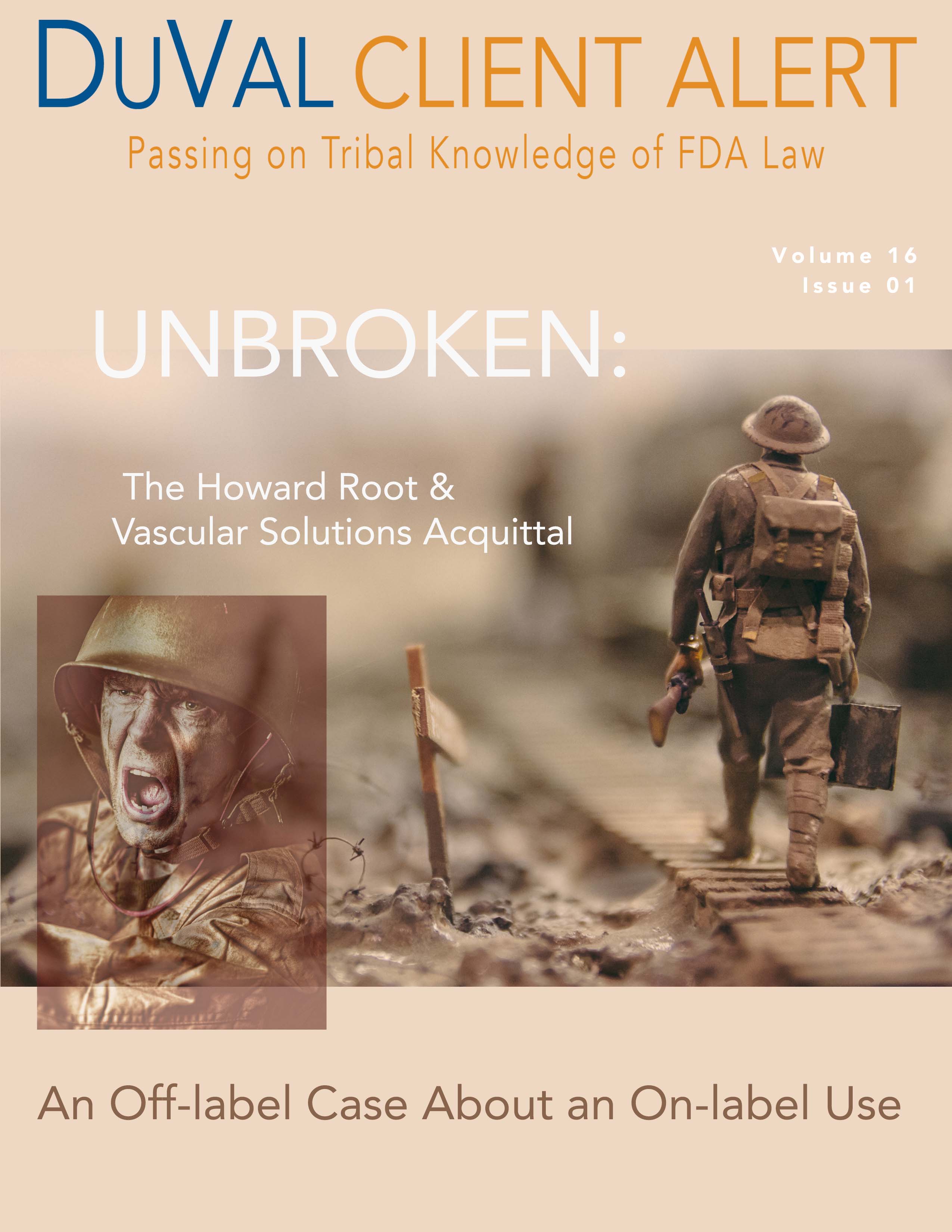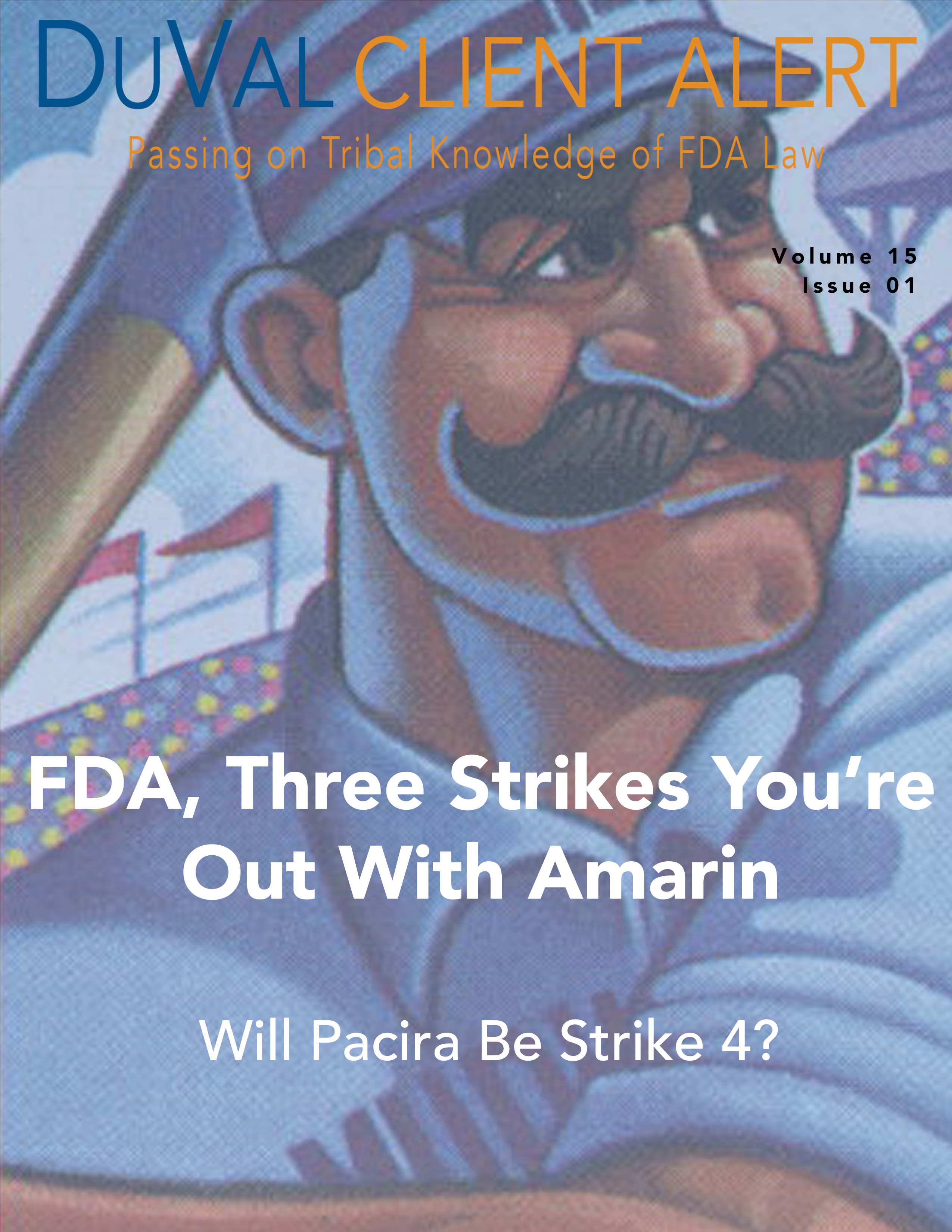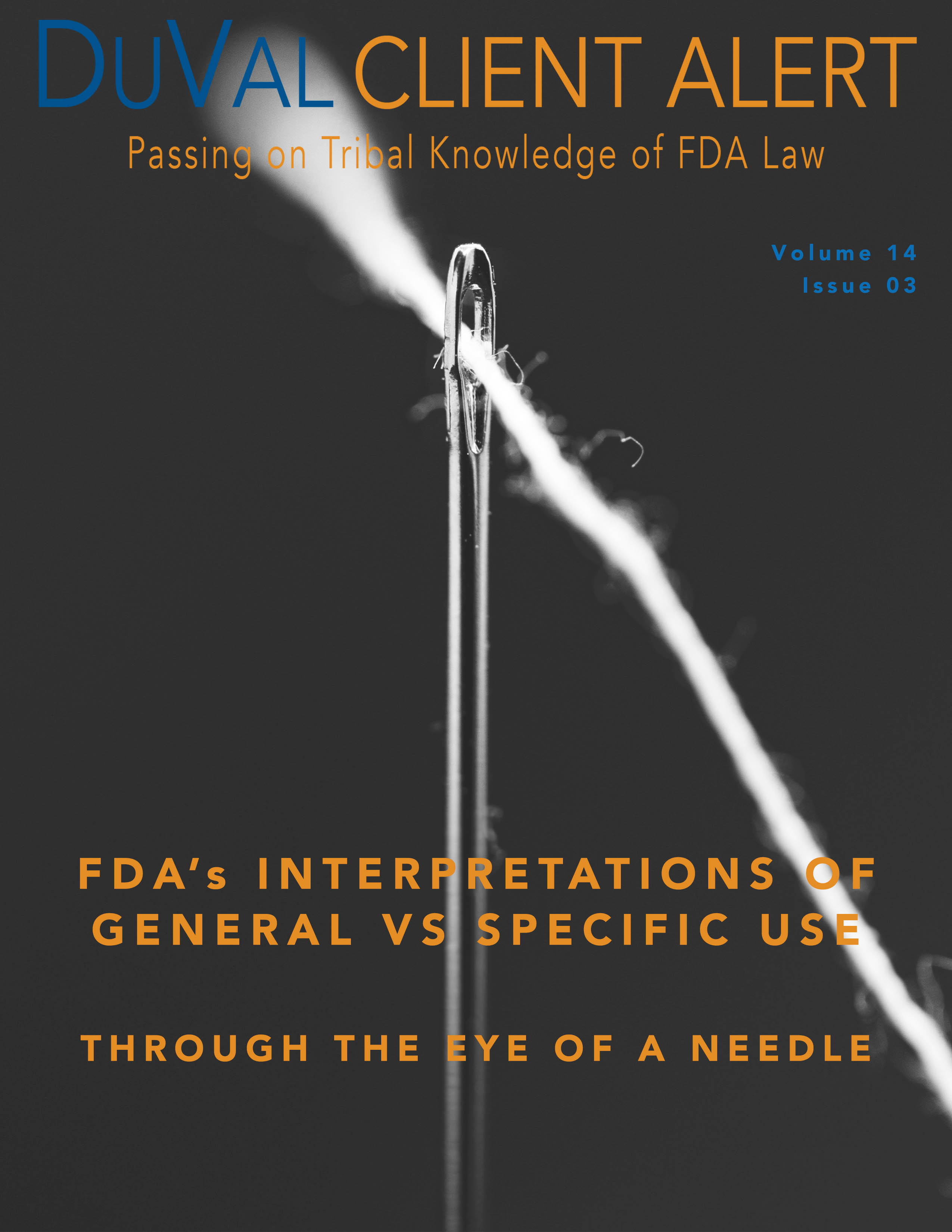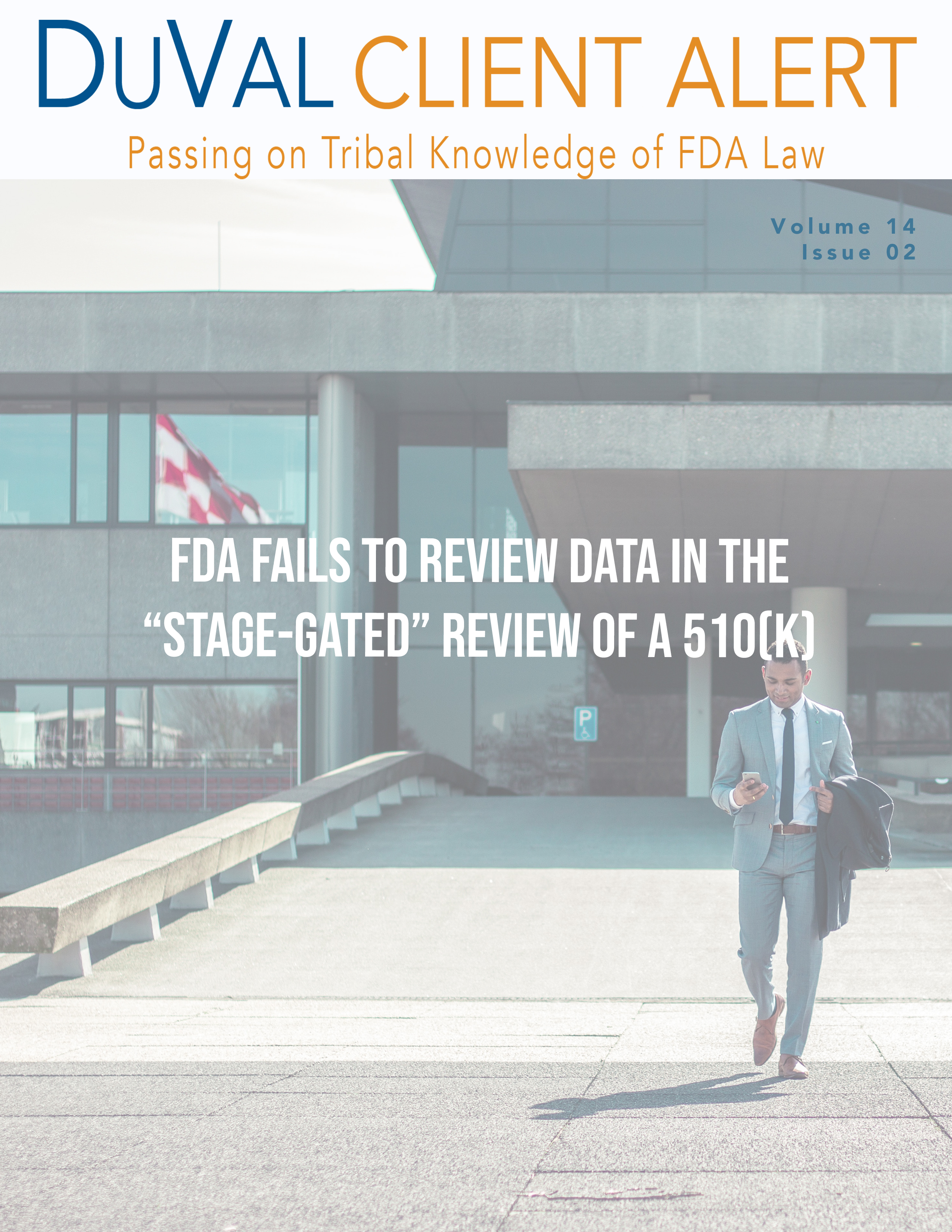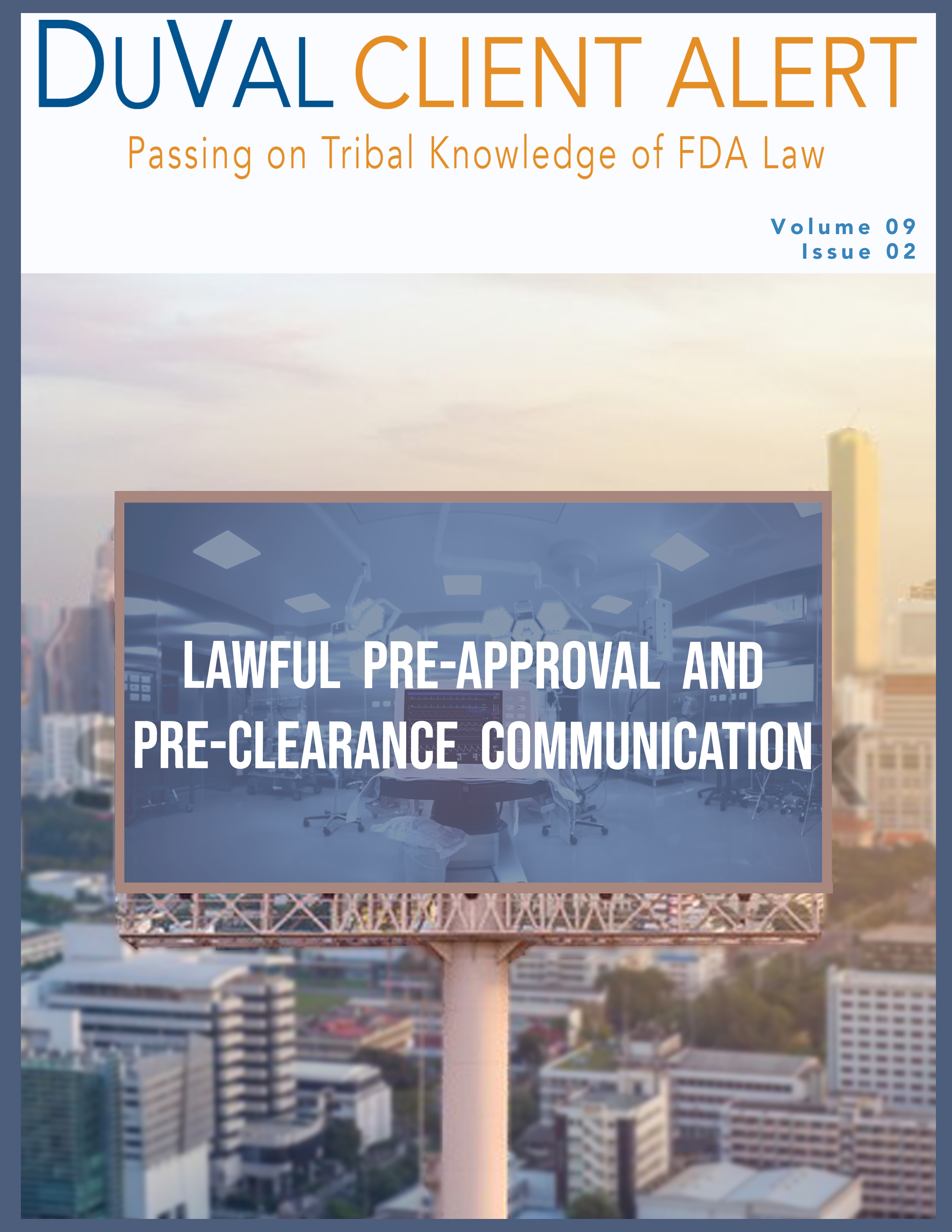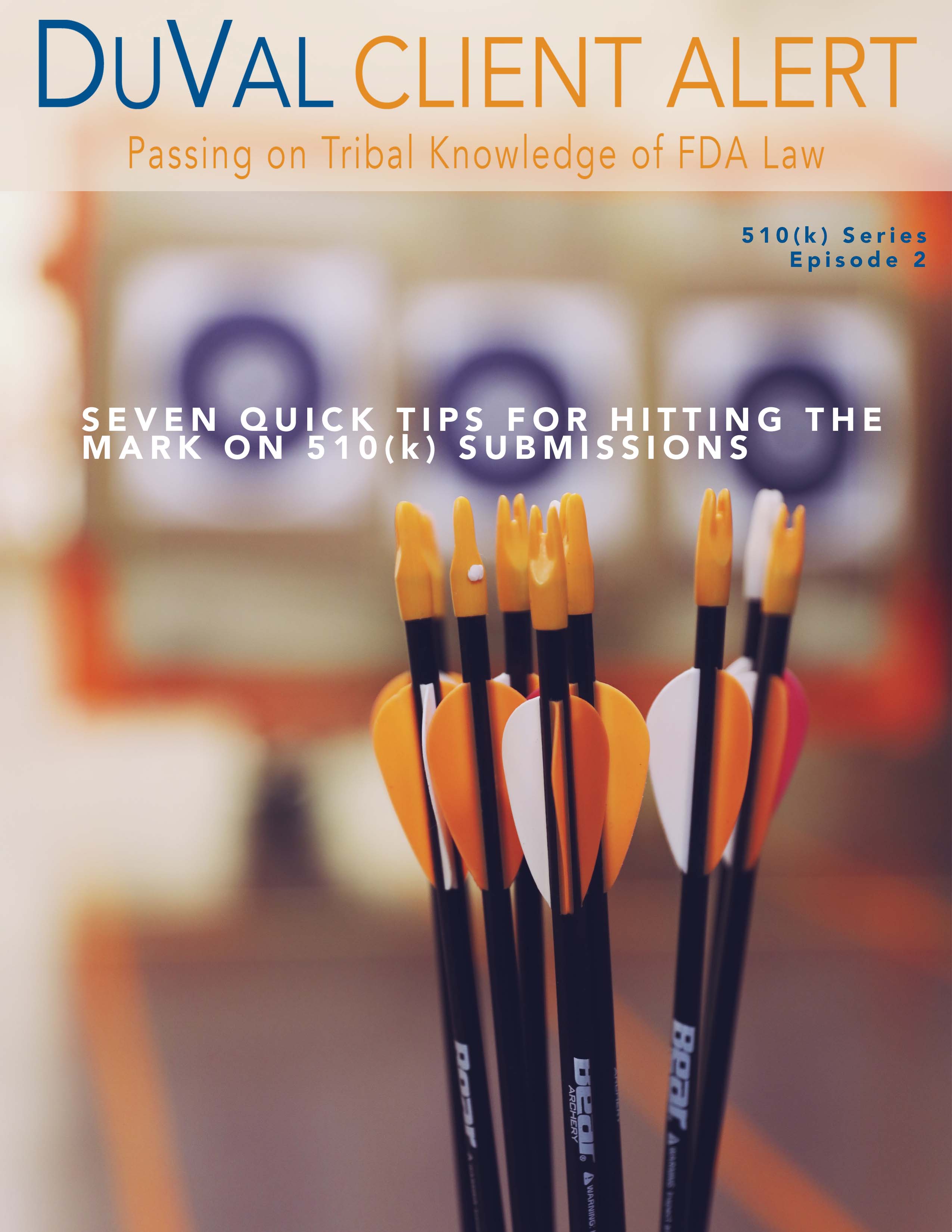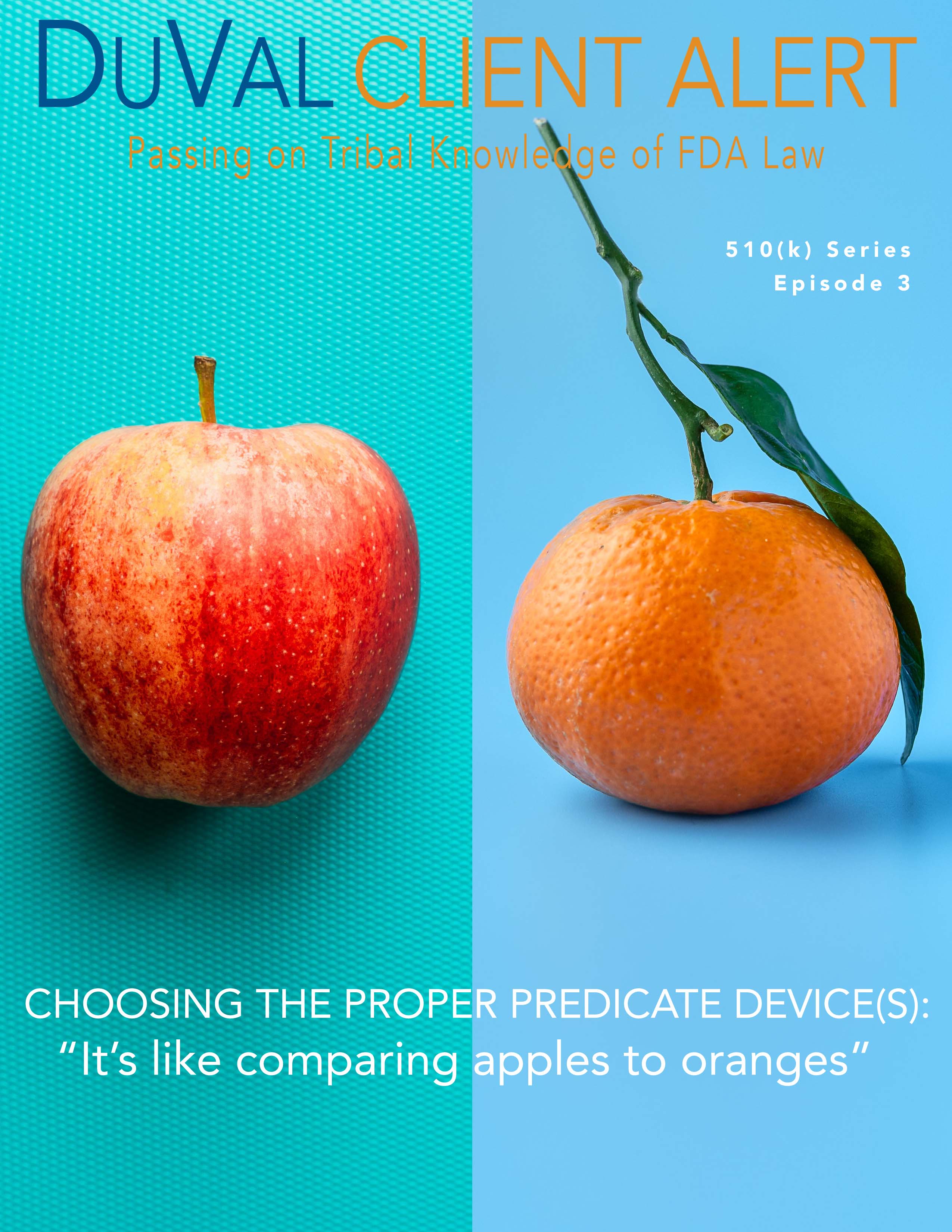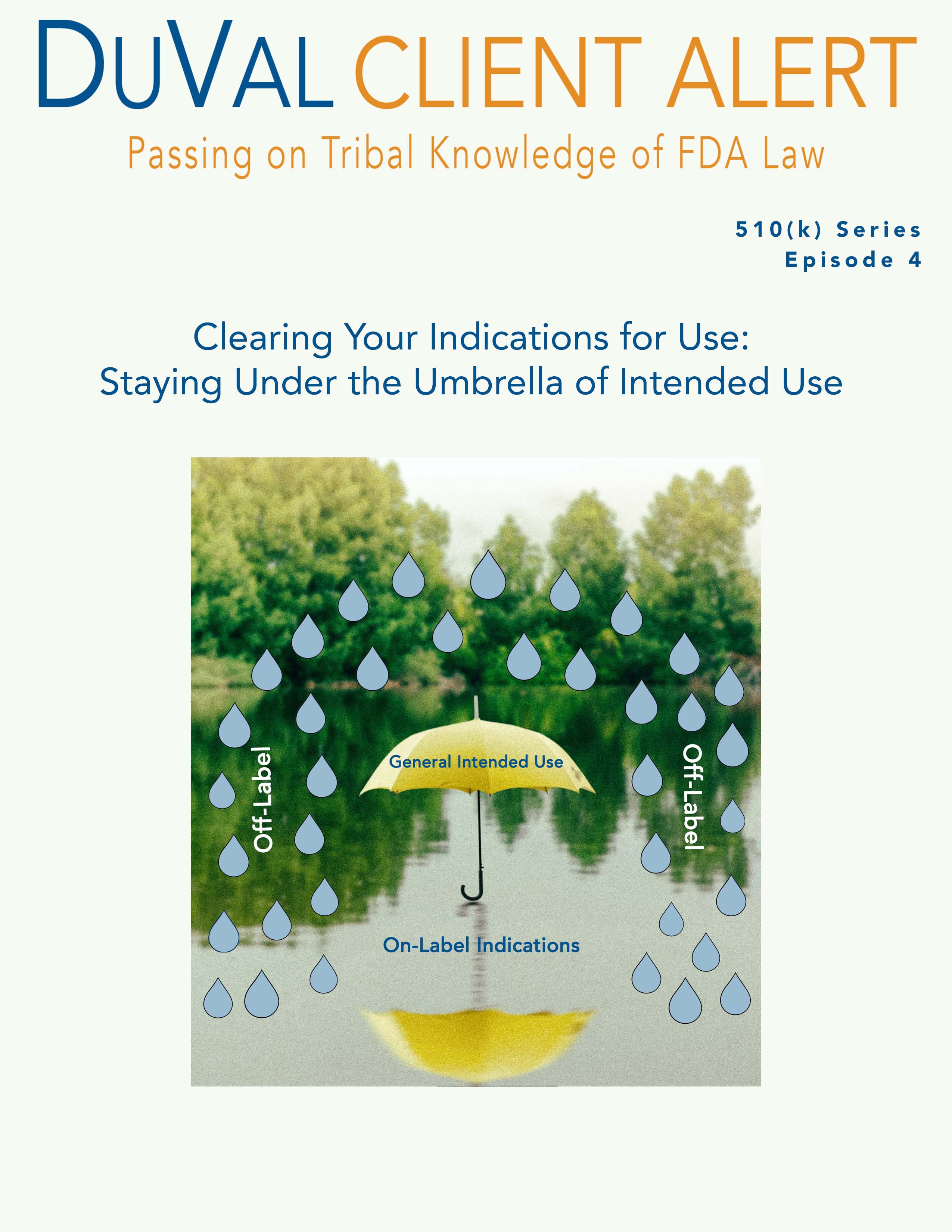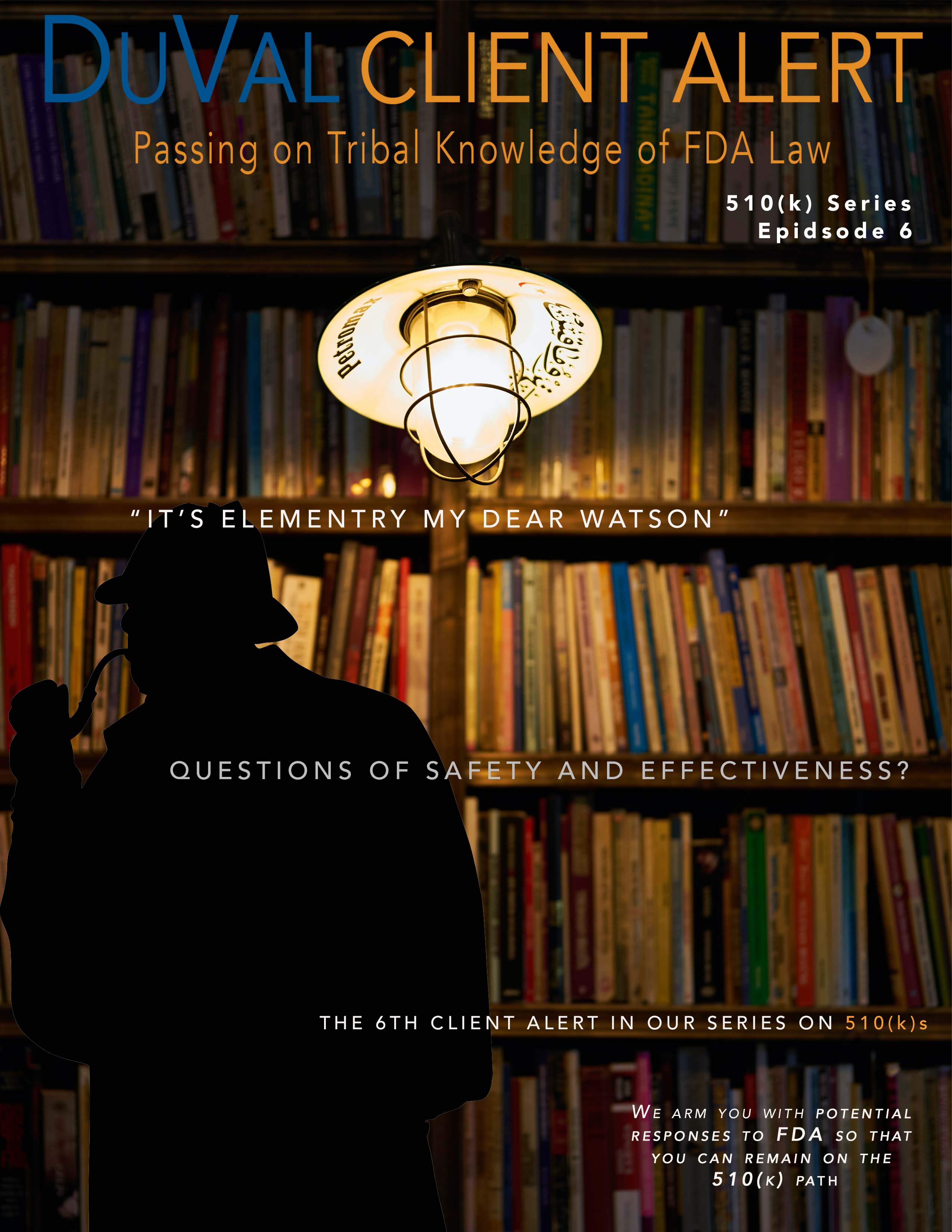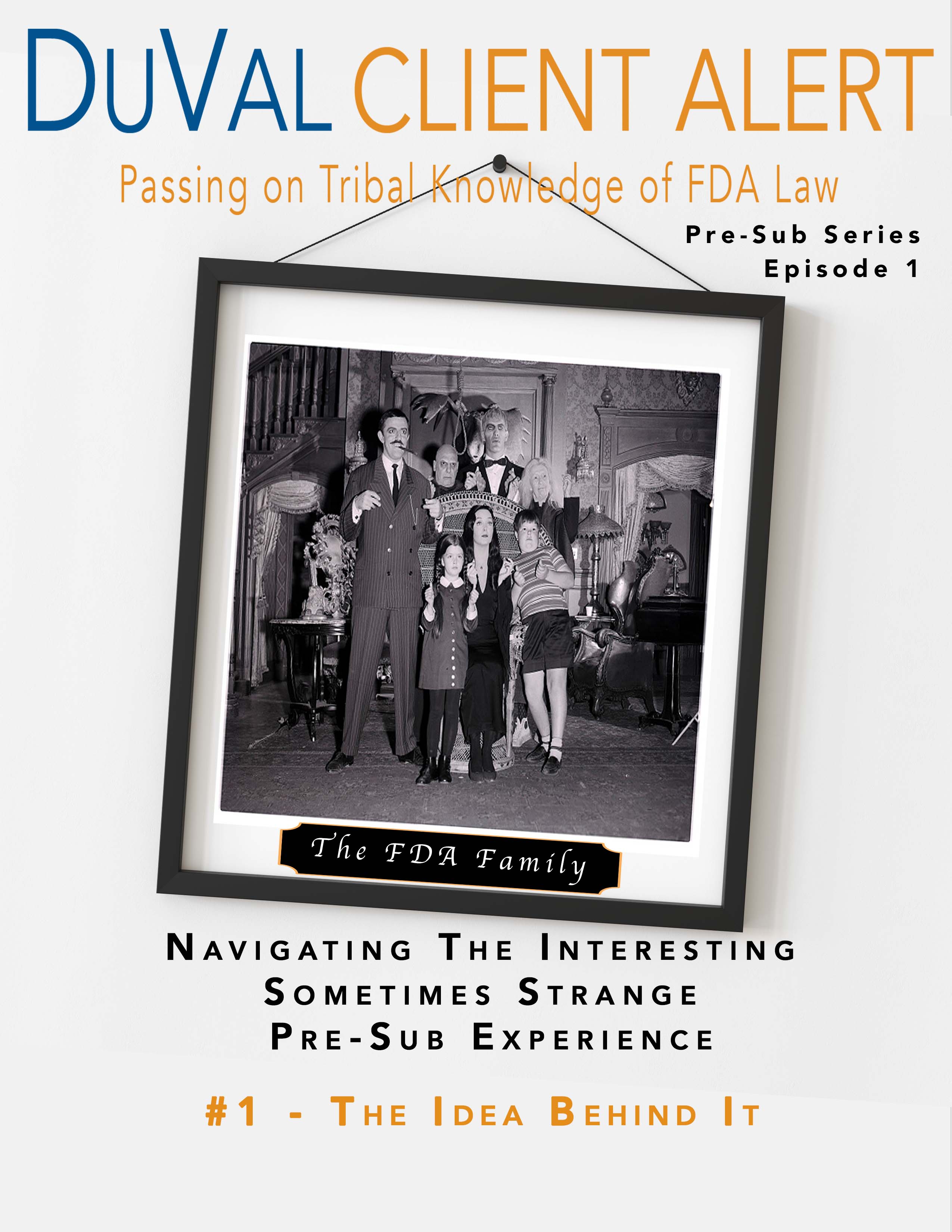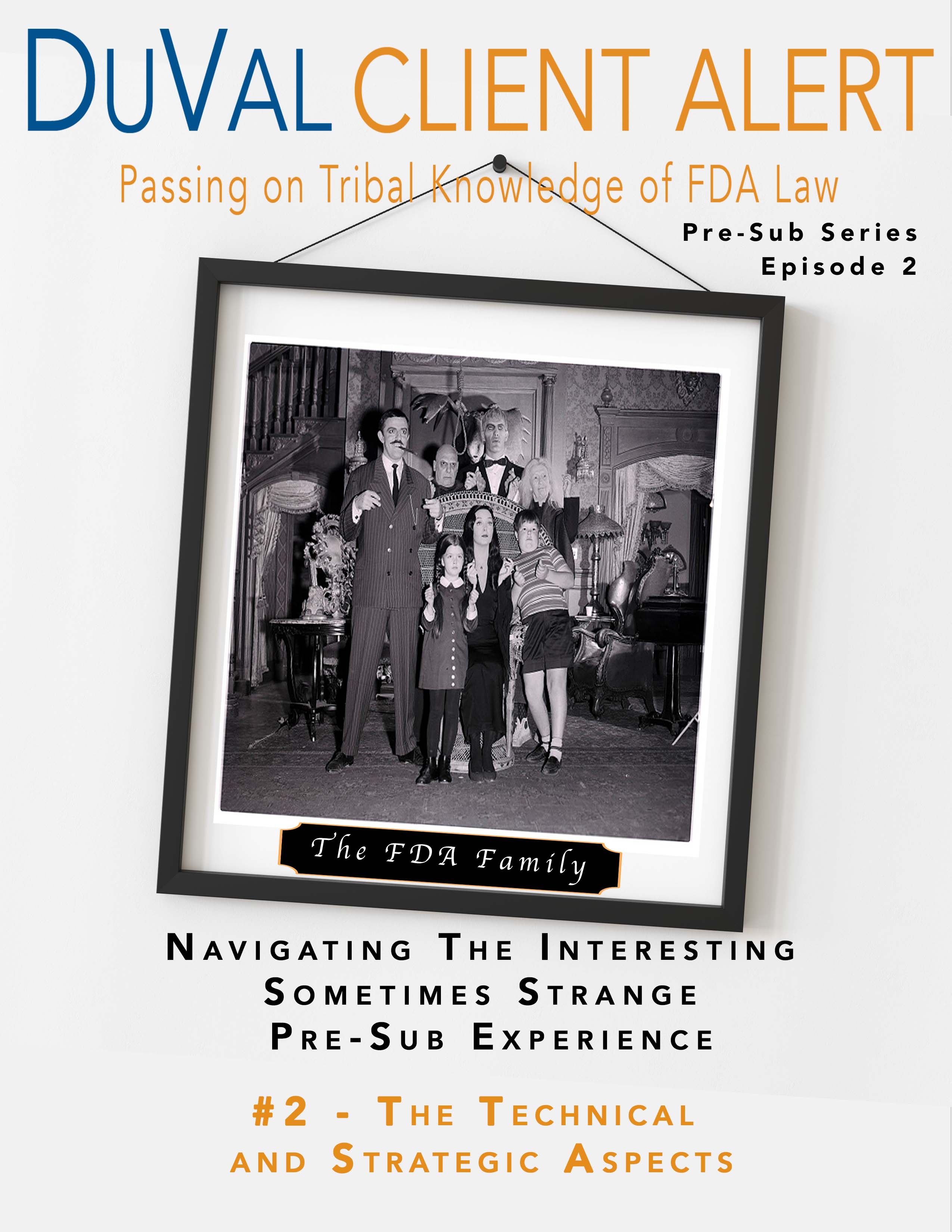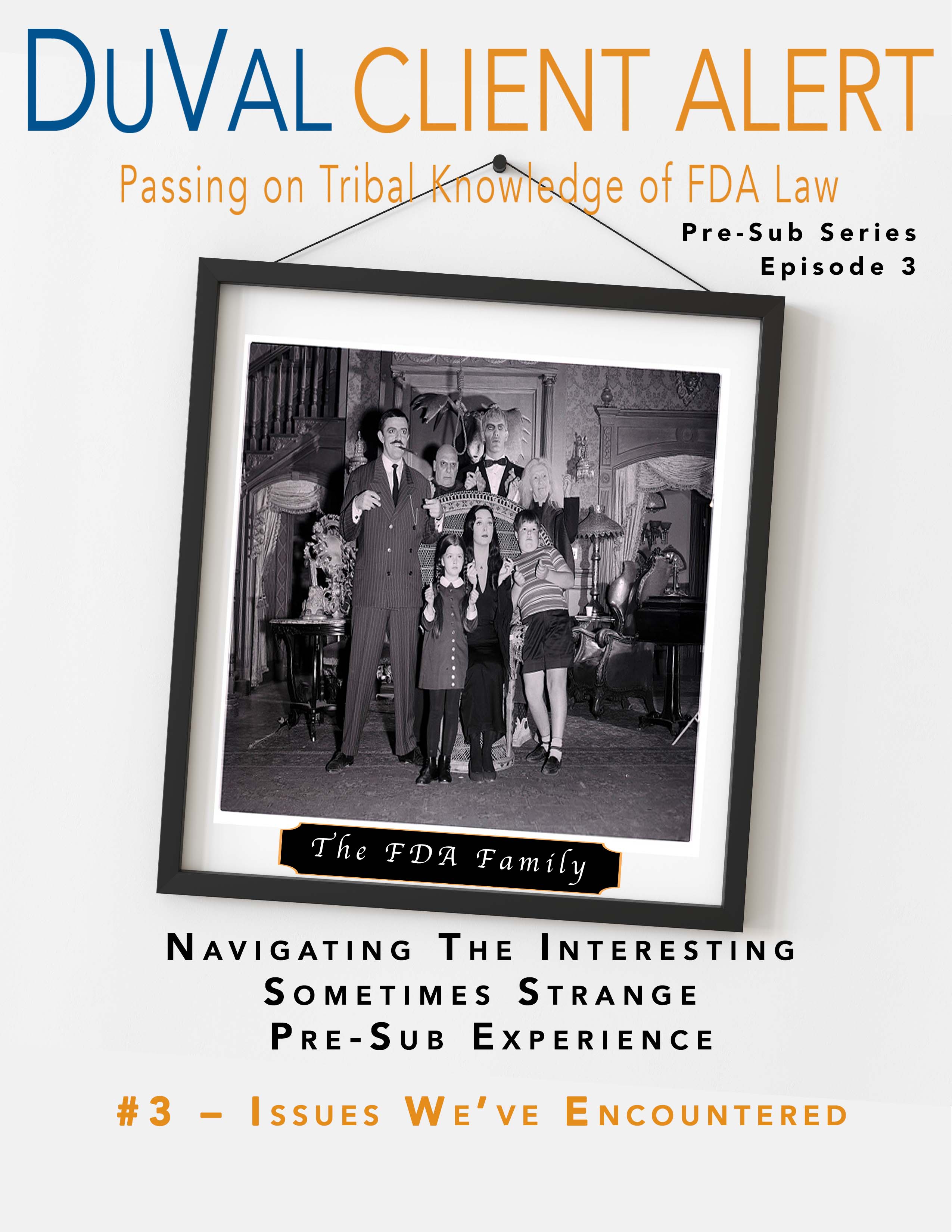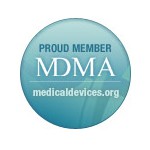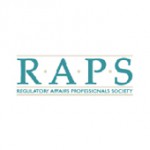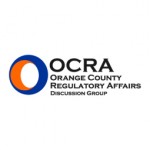Published 2025
Published 2024
Click here to read our full analysis and access the amicus brief.
Facteau Amicus Brief
DuVal & Associates has filed an amicus curiae brief with the U.S. Supreme Court in the case of William Facteau and Patrick Fabian v. United States, arguing that FDA's regulation of truthful and non-misleading speech must yield to the First Amendment. The brief, filed on behalf of former Vascular Solutions CEO Howard Root, contends that prosecuting such speech as adulteration and misbranding under the Food, Drug & Cosmetic Act is unconstitutional. This landmark case could have significant implications for medical device executives and the industry as a whole.Click here to read our full analysis and access the amicus brief.
Published 2024
Halting the Runaway Train
In our latest client alert, "Halting the Runaway Train: United Opposition to FDA's Wound Dressing Classification," we delve into FDA's recent Proposed Rule on the classification of wound dressings and liquid wound washes. Our analysis reveals a lack of substantial scientific evidence supporting FDA's proposed changes and highlights the overwhelming dissent from industry stakeholders, including physicians, manufacturers, and medical associations. We discuss the potential consequences of this rule for patient care, innovation, and the wound care sector as a whole. Read the full client alert to understand the implications of this controversial proposal and the united opposition it faces.
Published 2024
FDA's warning affects 510(k)s, De Novos and PMAs. Don't let questionable lab data derail your submission - get informed about this urgent issue.
FDA Letter to Industry
In the latest DuVal Client Alert, we provide an overview of the FDA's guidance and share insights from our experience assisting clients whose submissions were jeopardized and derailed by data integrity concerns. Learn the critical steps you should take to protect your applications.FDA's warning affects 510(k)s, De Novos and PMAs. Don't let questionable lab data derail your submission - get informed about this urgent issue.
Published 2024
This Regulatory Recap distills complex regulatory changes into practical knowledge you can leverage to inform submissions and compliance in 2024.
2023 Regulatory Recap
Gain critical insights on key FDA regulatory topics impacting medical devices in 2023, including new guidance documents, cybersecurity expectations, LDT status, and digital health trends.This Regulatory Recap distills complex regulatory changes into practical knowledge you can leverage to inform submissions and compliance in 2024.
Published 2023
This DuVal Client Alert will provide a high-level overview of the HIPAA Privacy Rule, key exceptions like the Public Health exception, and best practices to help medical device companies avoid gossip-fueled HIPAA violations. With digital communication proliferating across the healthcare industry, it's crucial for manufacturers to implement thoughtful policies and training to head off "grapevine" privacy risks before they happen.
HIPPA Compliance: I Heard it Through the Grapevine
In the classic 1968 soul hit, “I Heard It Through the Grapevine,” Marvin Gaye sings about his surprise when learning about a lover's infidelity “through the grapevine.”This DuVal Client Alert will provide a high-level overview of the HIPAA Privacy Rule, key exceptions like the Public Health exception, and best practices to help medical device companies avoid gossip-fueled HIPAA violations. With digital communication proliferating across the healthcare industry, it's crucial for manufacturers to implement thoughtful policies and training to head off "grapevine" privacy risks before they happen.
Published 2023
Encore: We hope you enjoyed the eSTAR series and are actively using the eSTAR templates to prepare your 510(k) or De Novo submissions, and now Pre-Subs (“PreSTARs”). As the eSTAR program continues to evolve, please check the Encores of this Client Alert series for updates on the eSTAR program.
The eSTAR and I - Encore #1
In Rodgers and Hammerstein’s Broadway hit The King and I, set in the 1860’s, the King was fascinated with science and innovation. He hired a schoolteacher, Anna, to be a governess to his children and educate them, to help modernize the country. In our adaptation, set in 2022, the King (FDA) implemented the voluntary eSTAR program to help modernize (and standardize) 510(k) and De Novo submissions. This submission format becomes mandatory starting October 1, 2023, for new 510(k) submissions in the kingdom. To help you gain experience and fully leverage this new submission format, we have created a four-part Client Series in tune with lyrics of the popular song from this musical “Getting to Know You”:Encore: We hope you enjoyed the eSTAR series and are actively using the eSTAR templates to prepare your 510(k) or De Novo submissions, and now Pre-Subs (“PreSTARs”). As the eSTAR program continues to evolve, please check the Encores of this Client Alert series for updates on the eSTAR program.
Published 2023
I. Medical Device Companies Must Develop Policies and Procedures to “Keep on the Sunny Side” of Sunshine Act Compliance.
II. Medical Device Companies Must Establish an Appropriate Tone from the Top to “Keep on the Sunny Side” of Sunshine Act Compliance
III. Medical Device Companies Must Educate Employees About the Consequences of Misconduct to “Keep on the Sunny Side” of Sunshine Act Compliance
Keep On The Sunny Side - The Sunshine Act
Implementing an appropriate Sunshine Act policy requires a fundamental understanding of the Act and its obligations. In this Client Alert we address three basic practices for Sunshine Act compliance:I. Medical Device Companies Must Develop Policies and Procedures to “Keep on the Sunny Side” of Sunshine Act Compliance.
II. Medical Device Companies Must Establish an Appropriate Tone from the Top to “Keep on the Sunny Side” of Sunshine Act Compliance
III. Medical Device Companies Must Educate Employees About the Consequences of Misconduct to “Keep on the Sunny Side” of Sunshine Act Compliance
Published 2023
Act IV: Getting to Hope You Like Me – This final Act provides insights as to what to expect from the FDA review process of eSTAR submissions.
The eSTAR and I - Act IV
In Rodgers and Hammerstein’s Broadway hit The King and I, set in the 1860’s, the King was fascinated with science and innovation. He hired a schoolteacher, Anna, to be a governess to his children and educate them, to help modernize the country. In our adaptation, set in 2022, the King (FDA) implemented the voluntary eSTAR program to help modernize (and standardize) 510(k) and De Novo submissions. This submission format becomes mandatory starting October 1, 2023, for new 510(k) submissions in the kingdom. To help you gain experience and fully leverage this new submission format, we have created a four-part Client Series in tune with lyrics of the popular song from this musical “Getting to Know You”:Act IV: Getting to Hope You Like Me – This final Act provides insights as to what to expect from the FDA review process of eSTAR submissions.
Published 2023
Act III: Getting to Like You – In this riveting Act, we share best practices to optimize eSTAR submission presentation.
The eSTAR and I - Act III
In Rodgers and Hammerstein’s Broadway hit The King and I, set in the 1860’s, the King was fascinated with science and innovation. He hired a schoolteacher, Anna, to be a governess to his children and educate them, to help modernize the country. In our adaptation, set in 2022, the King (FDA) implemented the voluntary eSTAR program to help modernize (and standardize) 510(k) and De Novo submissions. This submission format becomes mandatory starting October 1, 2023, for new 510(k) submissions in the kingdom. To help you gain experience and fully leverage this new submission format, we have created a four-part Client Series in tune with lyrics of the popular song from this musical “Getting to Know You”:Act III: Getting to Like You – In this riveting Act, we share best practices to optimize eSTAR submission presentation.
Published 2023
Act II: Getting to Know All About You – This dynamic Act provides more detail and strategy for how to use the eSTAR submission format and complete the templates.
The eSTAR and I - Act II
In Rodgers and Hammerstein’s Broadway hit The King and I, set in the 1860’s, the King was fascinated with science and innovation. He hired a schoolteacher, Anna, to be a governess to his children and educate them, to help modernize the country. In our adaptation, set in 2022, the King (FDA) implemented the voluntary eSTAR program to help modernize (and standardize) 510(k) and De Novo submissions. This submission format becomes mandatory starting October 1, 2023, for new 510(k) submissions in the kingdom. To help you gain experience and fully leverage this new submission format, we have created a four-part Client Series in tune with lyrics of the popular song from this musical “Getting to Know You”:Act II: Getting to Know All About You – This dynamic Act provides more detail and strategy for how to use the eSTAR submission format and complete the templates.
Published 2023
Act I: Getting to Know You – This Act provided an overview of the FDA’s eSTAR program and templates.
The eSTAR and I - Act I
In Rodgers and Hammerstein’s Broadway hit The King and I, set in the 1860’s, the King was fascinated with science and innovation. He hired a schoolteacher, Anna, to be a governess to his children and educate them, to help modernize the country. In our adaptation, set in 2022, the King (FDA) implemented the voluntary eSTAR program to help modernize (and standardize) 510(k) and De Novo submissions. This submission format becomes mandatory starting October 1, 2023, for new 510(k) submissions in the kingdom. To help you gain experience and fully leverage this new submission format, we have created a four-part Client Series in tune with lyrics of the popular song from this musical “Getting to Know You”:Act I: Getting to Know You – This Act provided an overview of the FDA’s eSTAR program and templates.
Published 2023
2022 Industry Recap
In this Client Alert, DuVal & Associates, P.A. provides industry reflections from 2022 based on our collective experiences from the past year. From the frontlines at FDA to client strategy meetings, we share the industry and business insights we gained while advocating for device clearances and approvals, negotiating Pre-Submission meetings, responding to warning letters, and interacting with FDA and other regulatory bodies. Thank you to all of our Clients we served in 2022.
Published 2022
Q-Sub Program
2021 Retrospection Highlight
In January 2021, FDA updated its Q-Submission Program that provides for many types of interactions with FDA. For our clients, Pre-Submissions (Pre-Subs) and Submission Issue Requests (SIRs) have been the most popular and useful type of Q-Submissions. Pre-Subs can be very helpful to de-risk an IDE or commercialization (e.g., 510(k), De Novo, or PMA) submission.
Published 2022
Least Burdensome
2021 Retrospection Highlight
The year 2022 marks the 25th year since Congress first directed FDA to use a “least burdensome” (LB) approach when reviewing device applications with the enactment of FDAMA in 1997. The intent of the LB approach is to hold FDA accountable to require only the minimum information needed. Unfortunately, FDA’s implementation followed Lou Holtz’s quote “When all is said and done, more is said than done.”
Published 2022
Novel Device Programs
2021 Retrospection Highlight
FDA has two programs for novel medical devices: the Breakthrough Device Designation (BDD) and the Safer Technologies Program (STeP). The Breakthrough Device Designation (BDD) program has been gaining in popularity since its inception. In 2021, a little sister was born to the BDD program – the Safer Technologies Program (STeP). This program is very similar in concept to the BDD program but does not have the backing of regulation.
Published 2022
510(k) Program
2021 Retrospection Highlight
2021 was a mixed bag for the 510(k) program. The vast majority of products that come to the market are through the 510(k) path. As such, it remains critical that we evaluate how the FDA is doing with clearances. To understand FDA’s view of the 510(k) path, one has to understand the history of Dr. Shuren’s tenure with CDRH.
Published 2022
De Novo Program
2021 Retrospection Highlight
In October, FDA issued a final rule on the De Novo Classification Process. The new regulation is 21 CFR Part 860 and becomes effective on January 3, 2022 (90 days after publication of the rule). In association with this update, FDA released multiple guidance documents to assist with the preparation of these submissions.
Published 2022
Combination Products
2021 Retrospection Highlight
FDA’s regulation of drug, device and combination products has an extensive legislative, judicial and experiential history that would lead one to expect that the regulatory pathway for a given product type, especially one that has been in the U.S. market for decades, should be well-established.
Published 2022
Off-Label Communications & The New Intended Use Regulations
2021 Retrospection Highlight
After a nearly five-year delay, FDA’s new “intended use” rule, 21 CFR § 801.4, finally became effective on September 1, 2021. Under the new rule, FDA clarifies the types of evidence relevant to determining the intended use of a medical device under the Food, Drug & Cosmetic Act.
Published 2022
Digital Health & Multiple Device Function
2021 Retrospection Highlight
The digital health space continued to grow in 2021, and is becoming an integral part of healthcare during the COVID- 19 pandemic. Over the past two years people have become more accustomed to telehealth and taking an active role in their health, including using wearable technology to monitor health and wellbeing.
Published 2021
Do You Want To Build A Program?
Will the FDA STeP Program Live Happily Ever After Like Elsa? At first glance, Frozen has little relevance to the medical device industry. But Elsa and Anna’s contrasting characters serve as a useful analogy when comparing the Food & Drug Administration’s (“FDA”) Breakthrough Devices Program with its new, sister program, the “Safer Technologies Program” or “STeP” Program. While this is a cutesy analogy for our firm, given our past Client Alerts, Frozen is popular enough to have universal understanding.
Published 2017
When Do 510(k) Modifications Transform a Device?
Transformers® start out as a car or truck, but with a few gyrations they morph into a fighting machine capable of attacking enemies or defending friends. Surely, they do not look anything like they did before, but has their essential character changed, has their intended use? Do the changes significantly affect their safety or effectiveness?
Published 2014
David (Ivy Sports) Beats Goliath (FDA)
FDA again misjudged its strength and position and the little principled warrior, Ivy Sports Medicine, LLC, whose predecessor was ReGen Biologics. In this epic battle Ivy Sports is a small company and seemingly ill-equipped to do battle with the giant, FDA.
Published 2014
General vs. Specific Use Through The Eye Of A Needle
FDA is reinterpreting FDA’s view of “general versus specific intended use” so narrowly that FDA now considers almost every new indication for a 510(k) device to be a new intended use in contravention of the specific intent of the Congress
Published 2014
FDA Fails To Review Data In The "Stage-Gated" Review of a 510(k)
Is FDA not reviewing your data in a 510(k) submission? Have you ever received a Not Substantially Equivalent (NSE) letter from FDA stating your device does not meet of the definitional elements of “substantial equivalence?” Did FDA do this without even looking at your data when you data may have helped your device meet the SE definition?
Published 2013
Little Red Riding Hood and the Big Bad Wolf: Beware of De Novo
You remember the story; the Wolf disguises himself as Little Red Riding Hood, alters his voice and demeanor, draws Grandma in and then devours her. The beginning of that story serves as a metaphor for the way in which the de novo program looks like—a benign substitute for the 510(k) program. And when a company is drawn into a de novo review by the FDA, the company gets devoured.
Published 2012
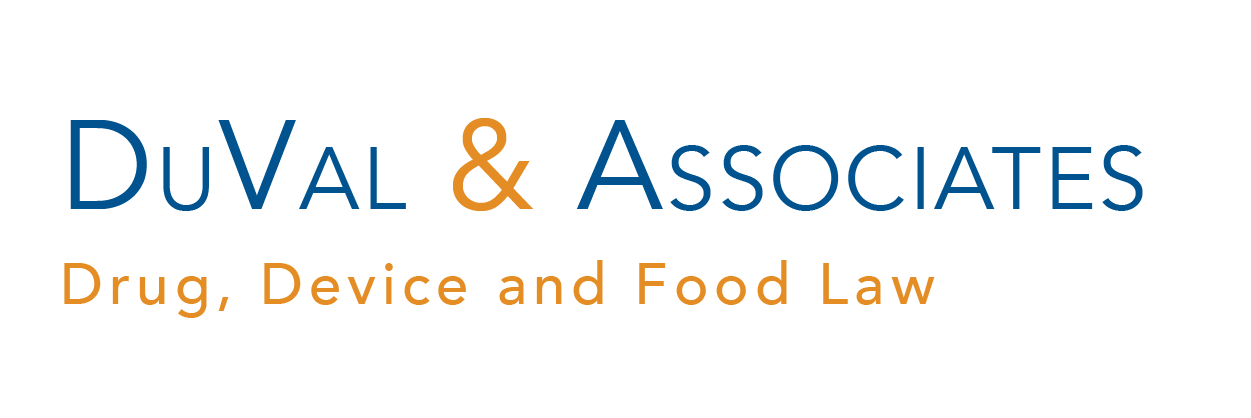
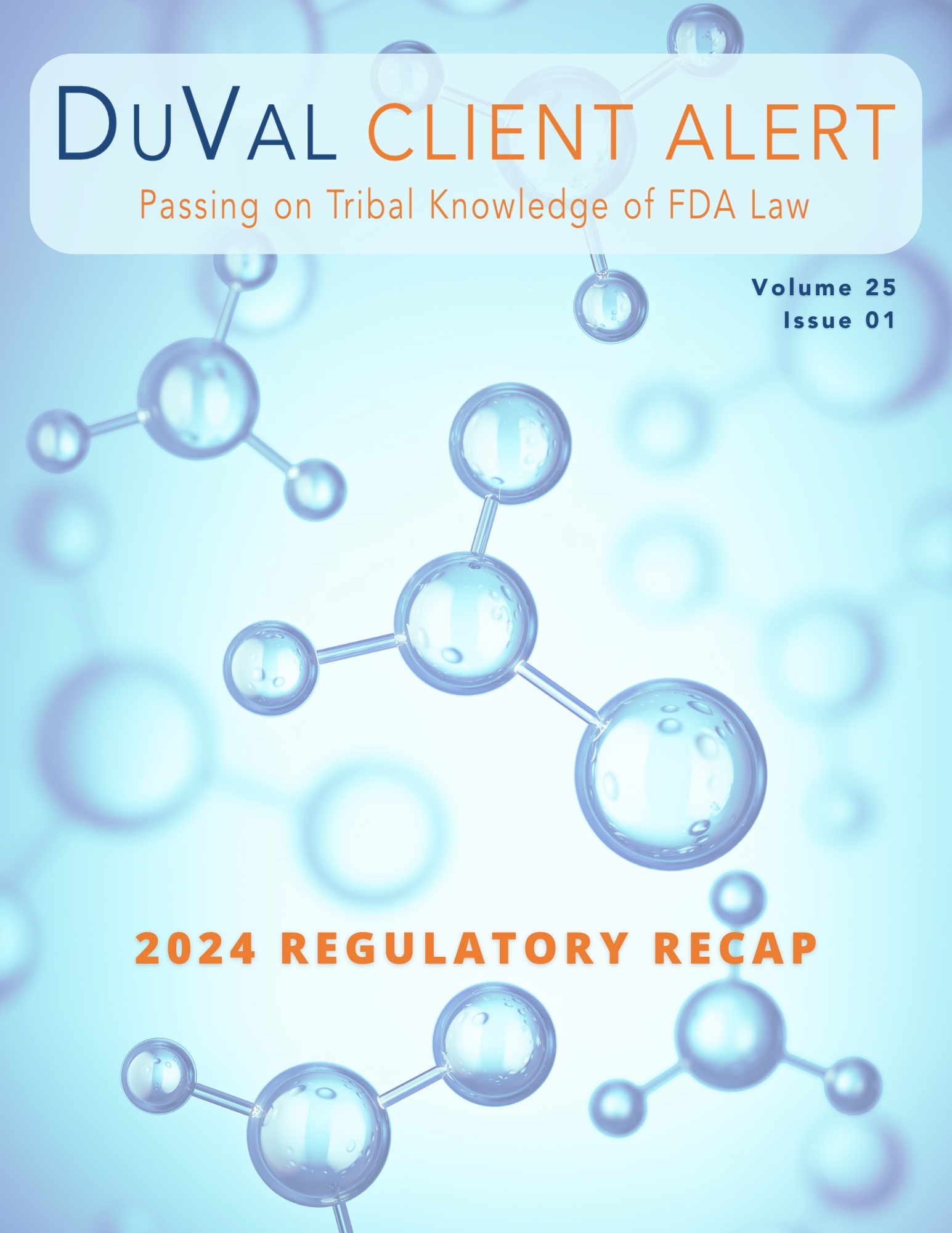





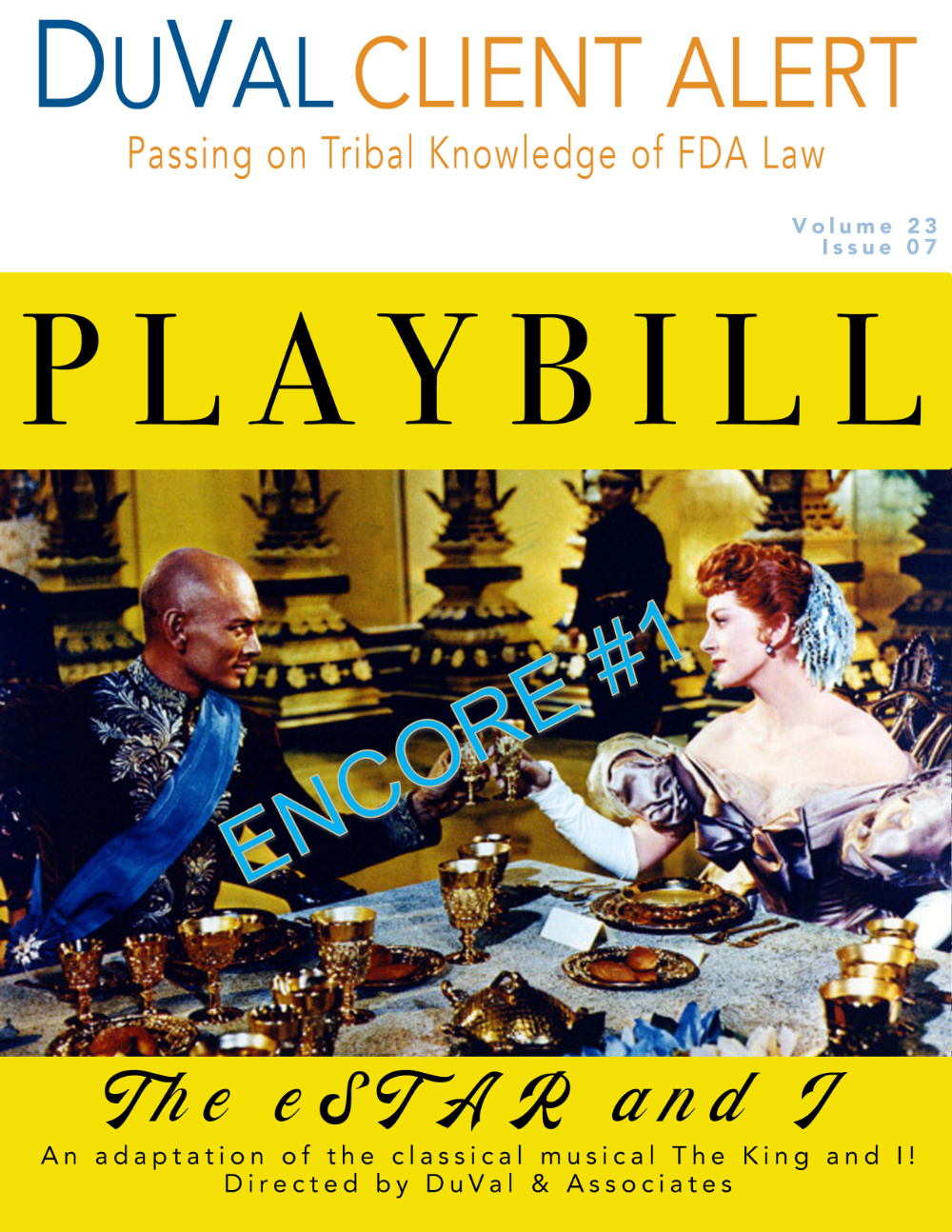
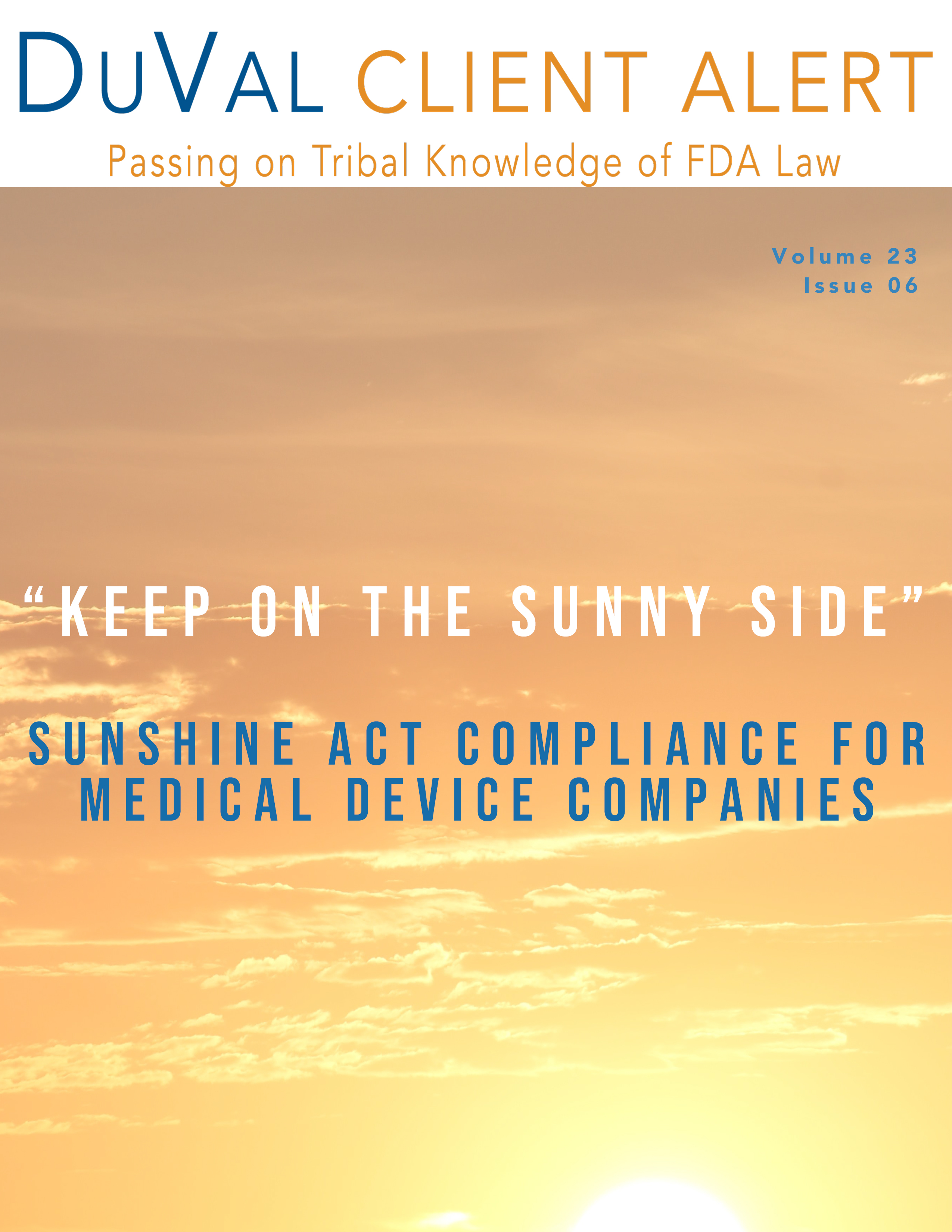
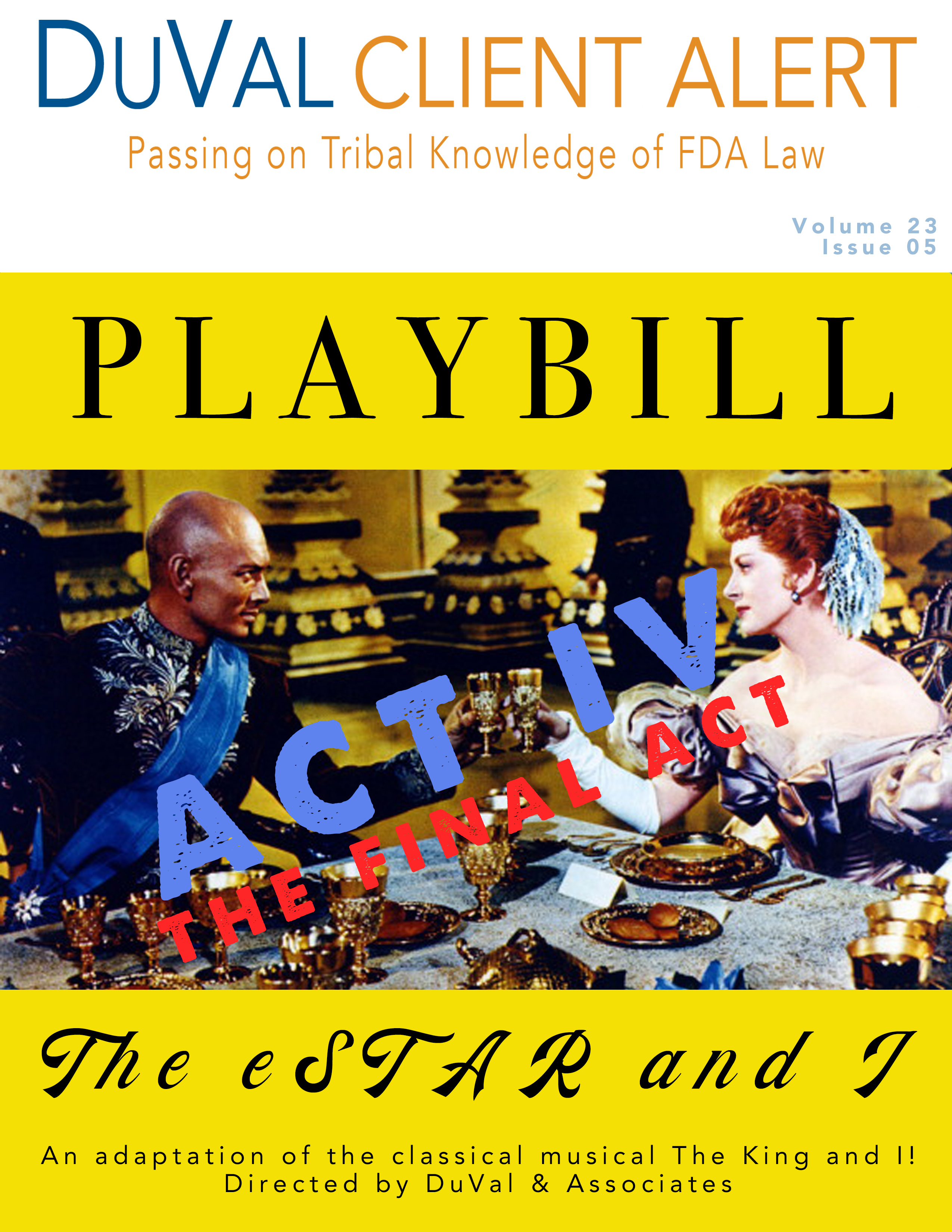
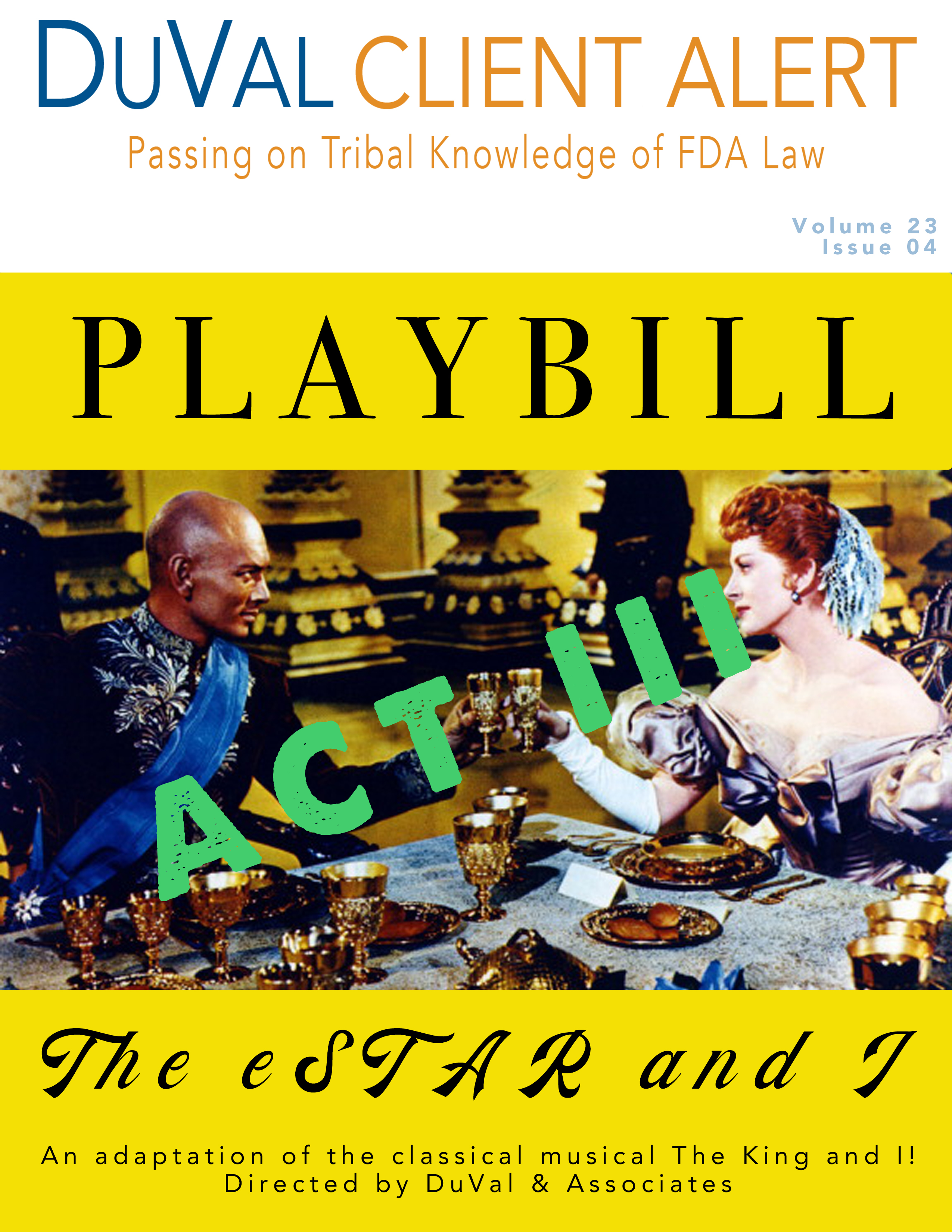
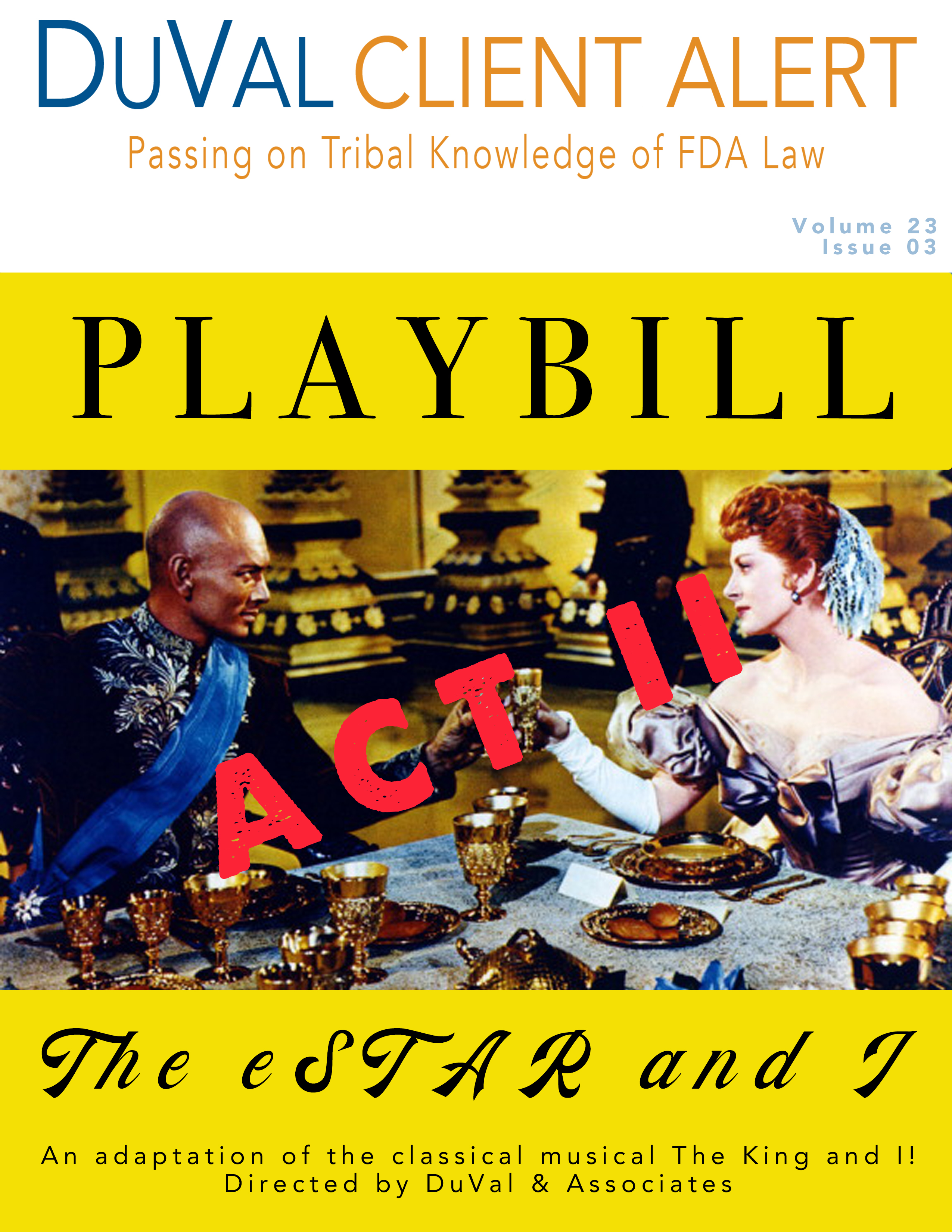
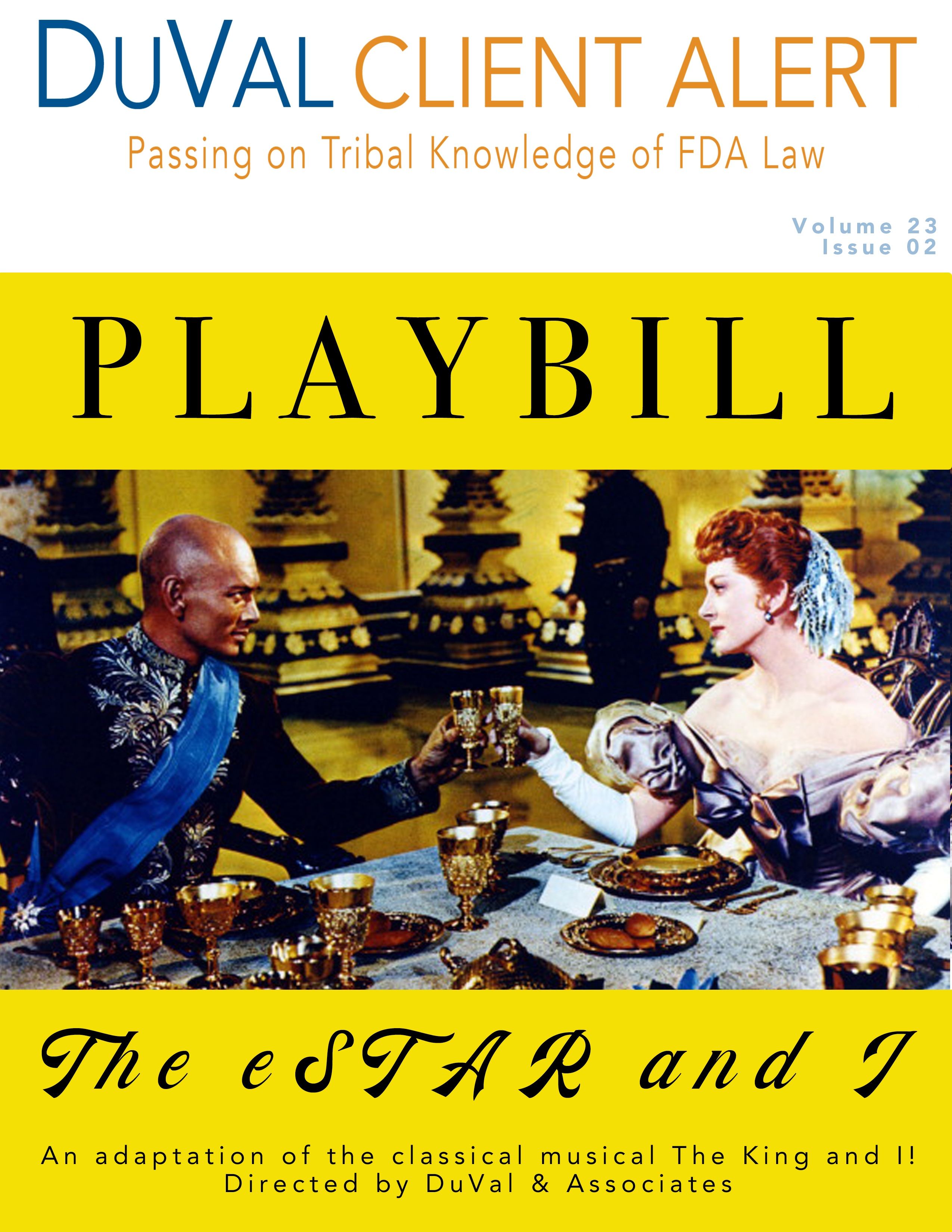
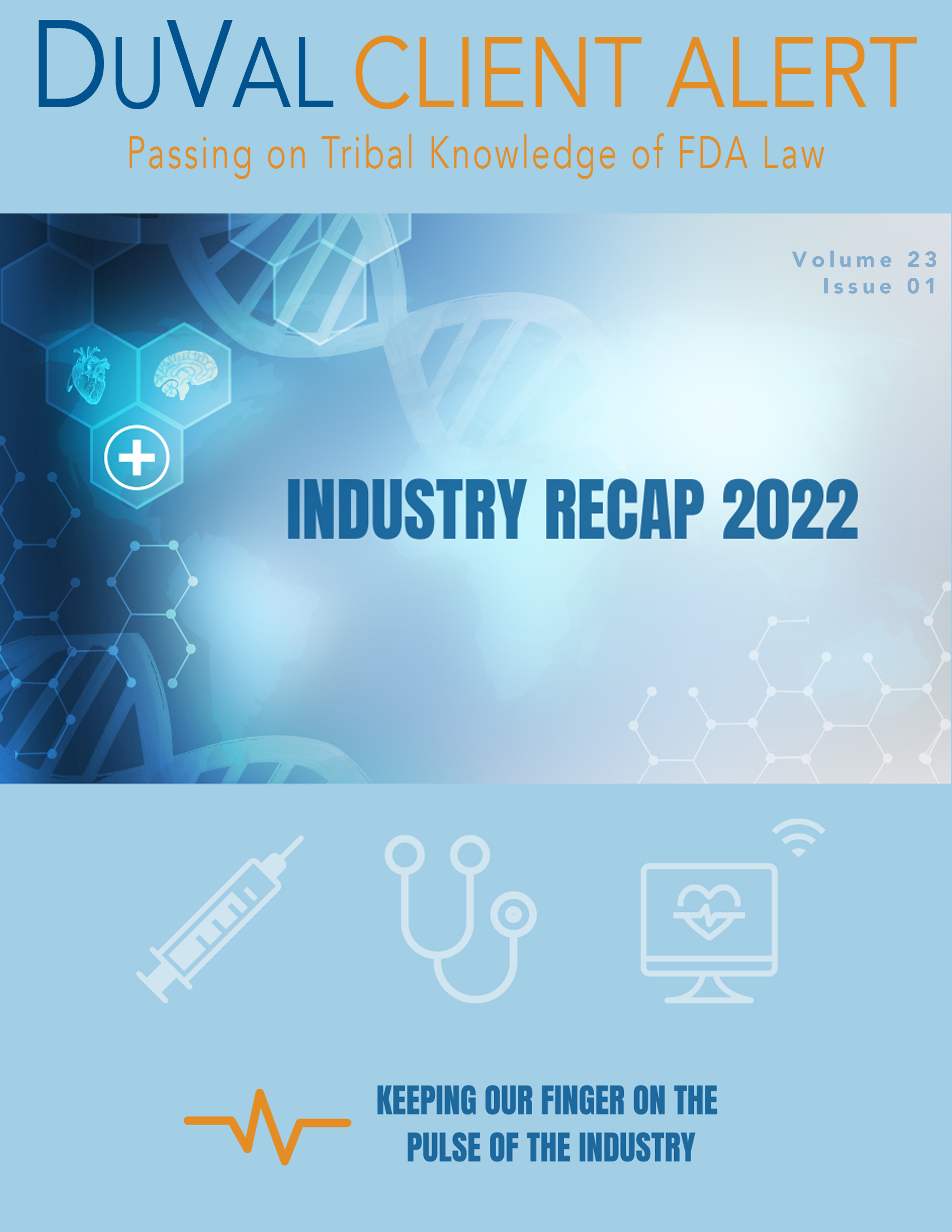
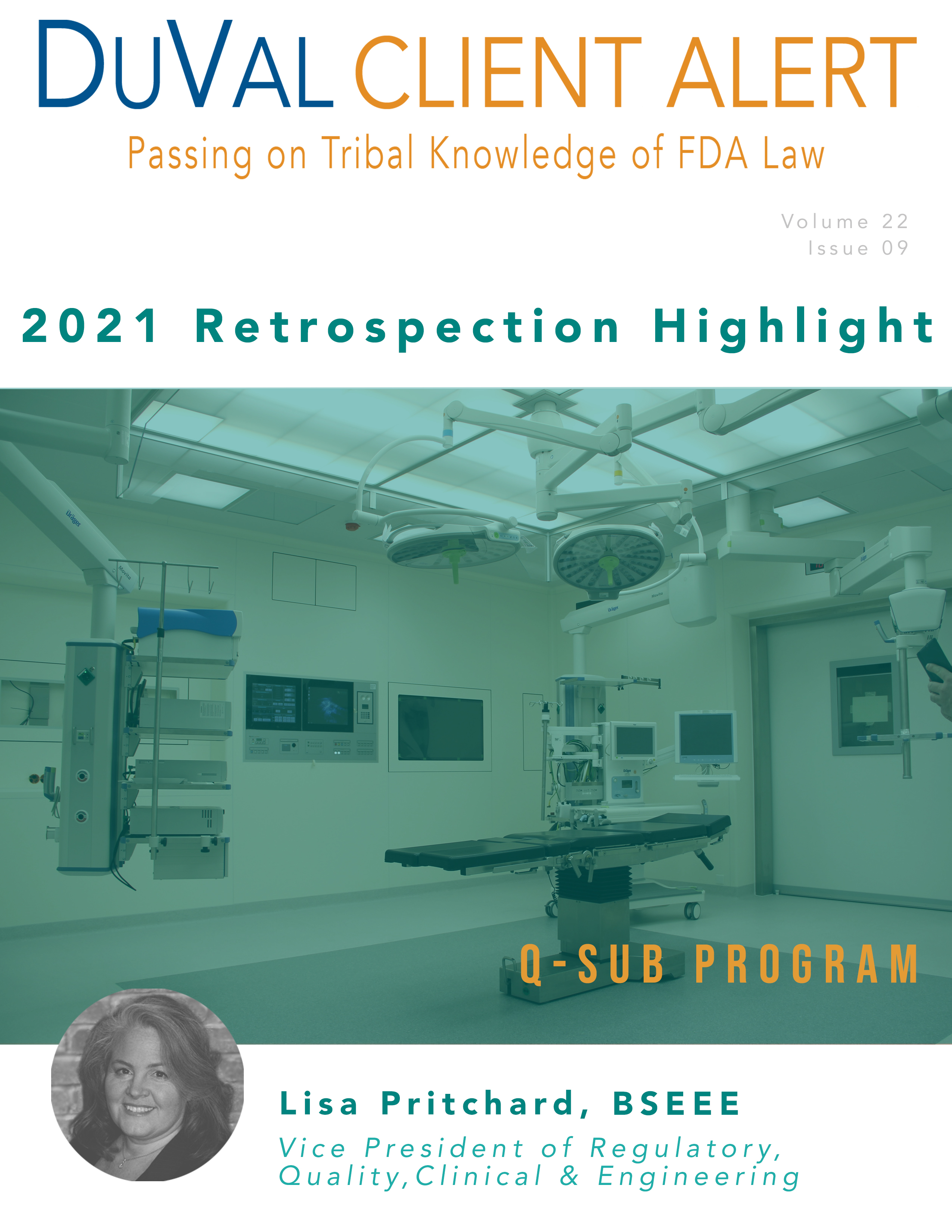
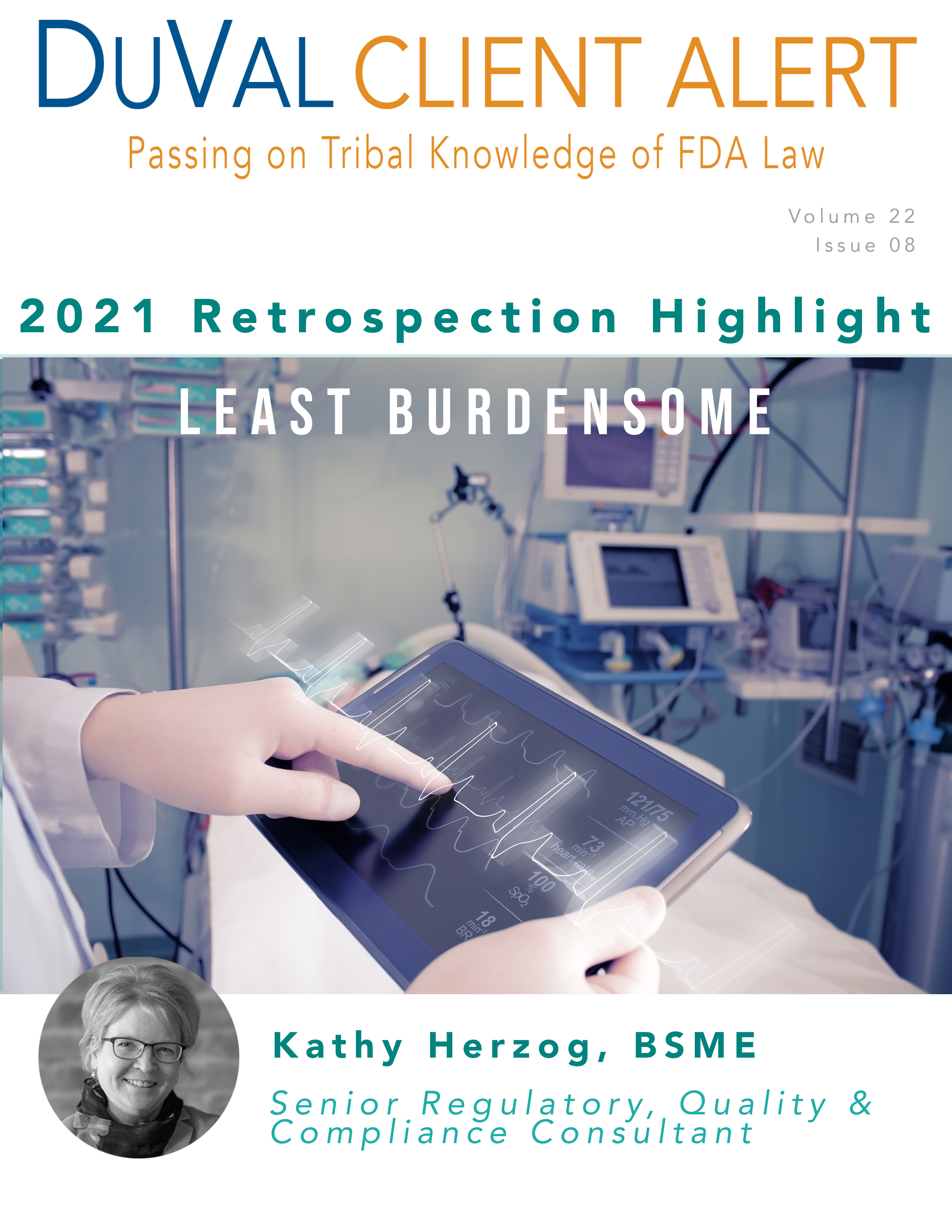
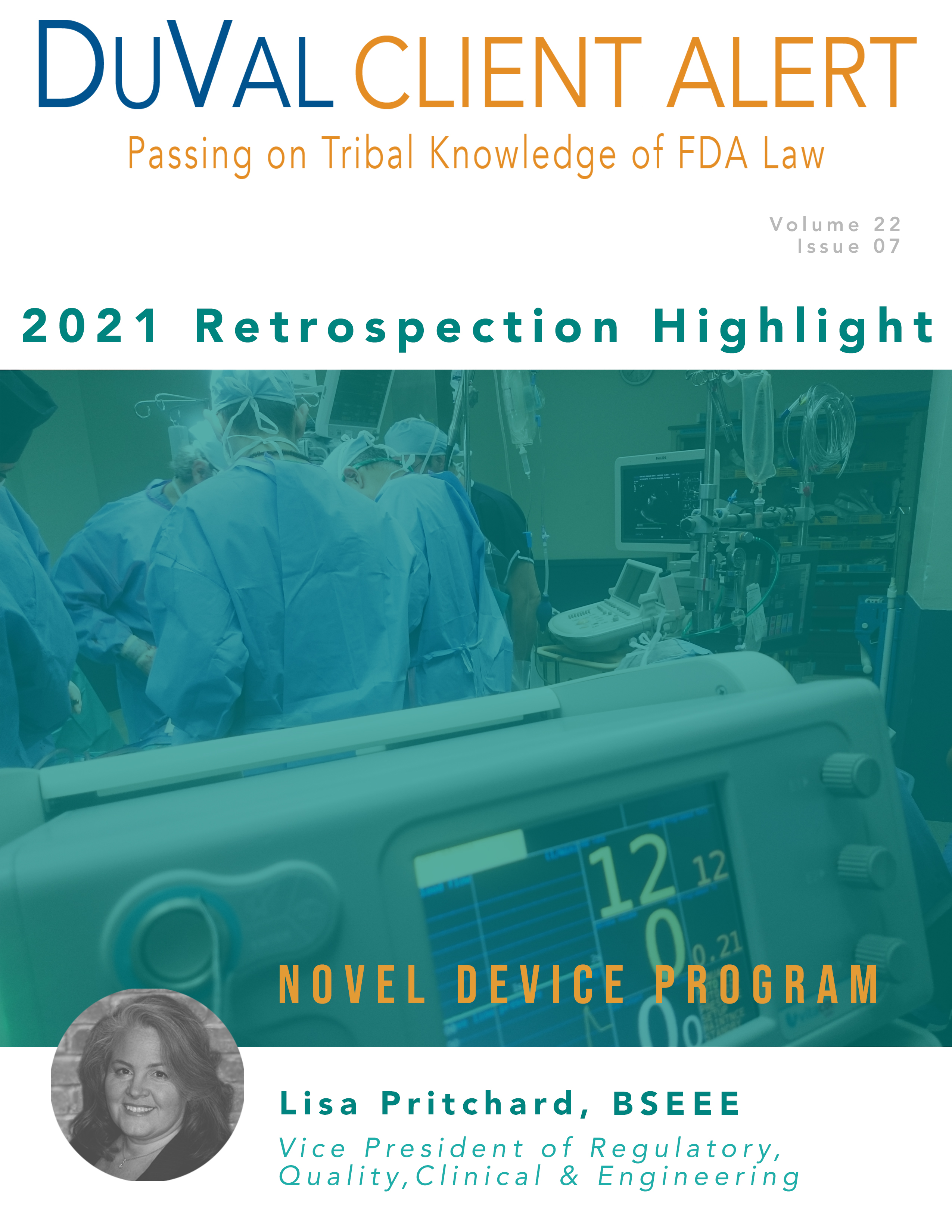

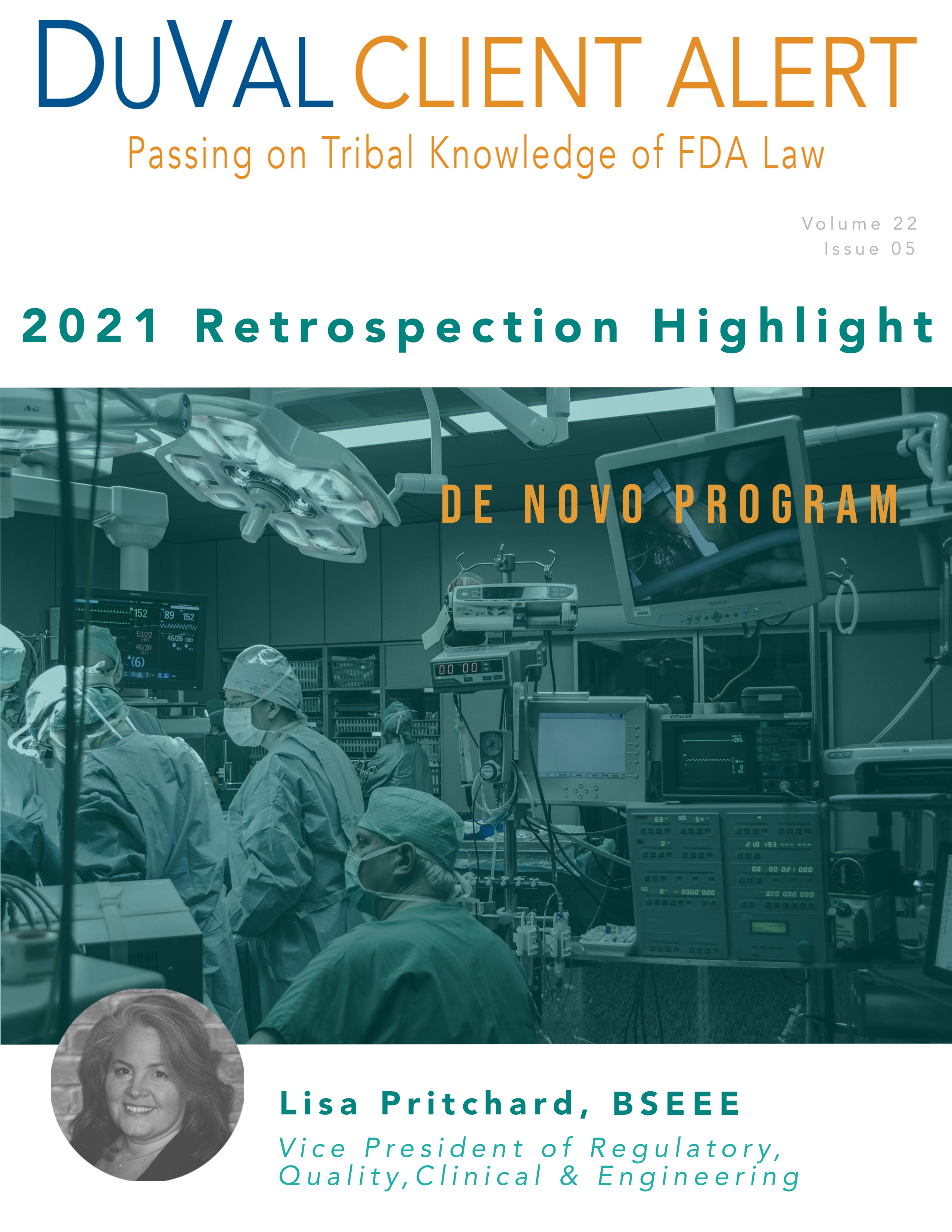
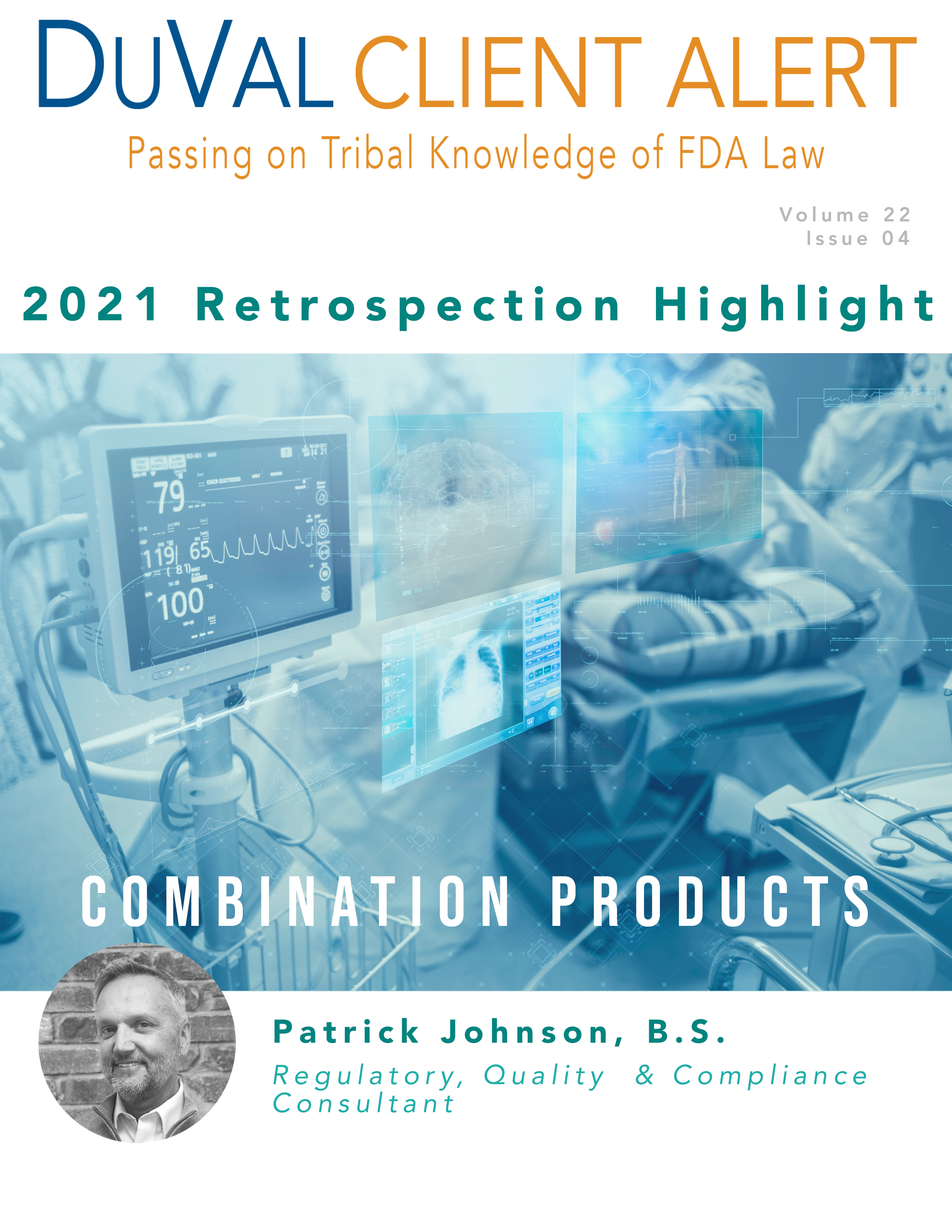
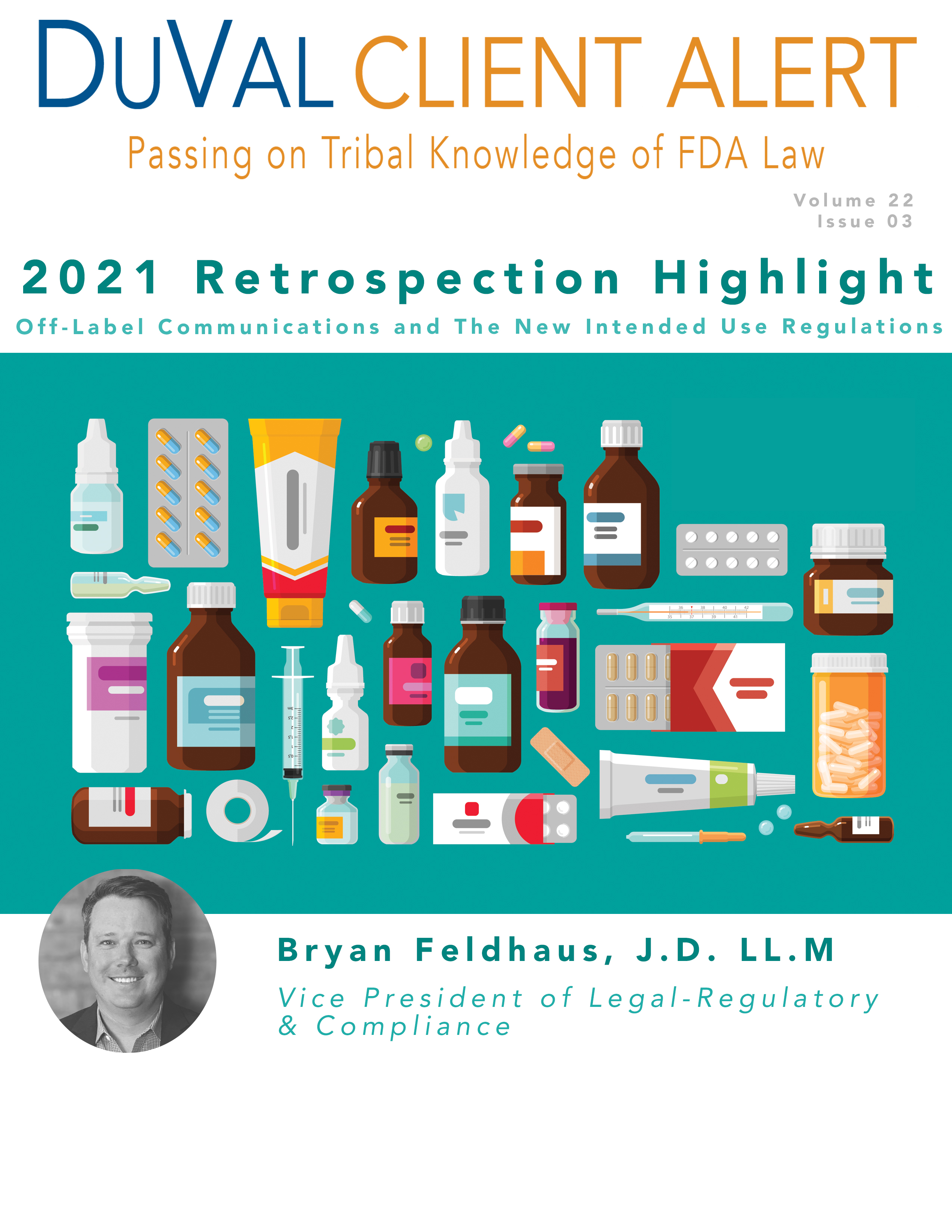
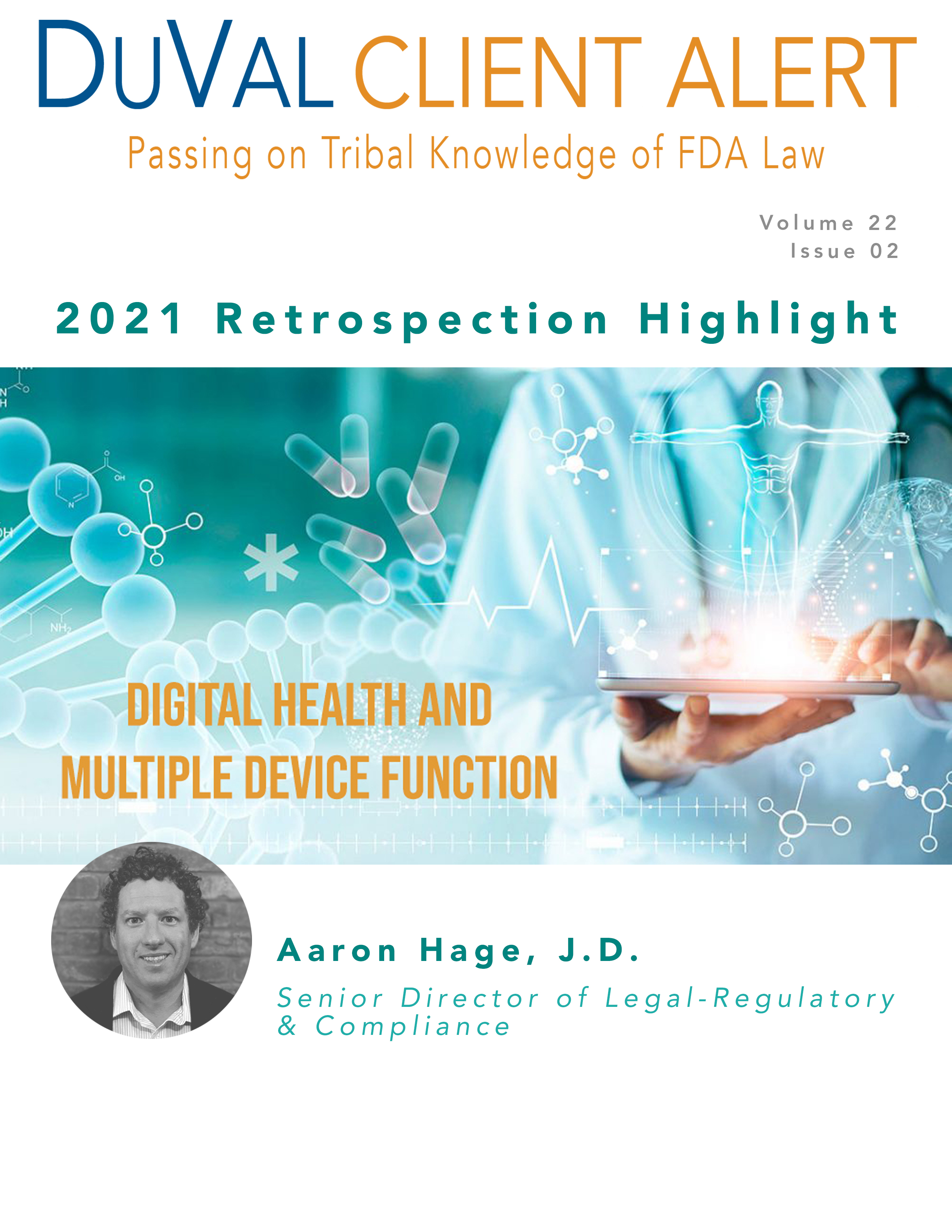
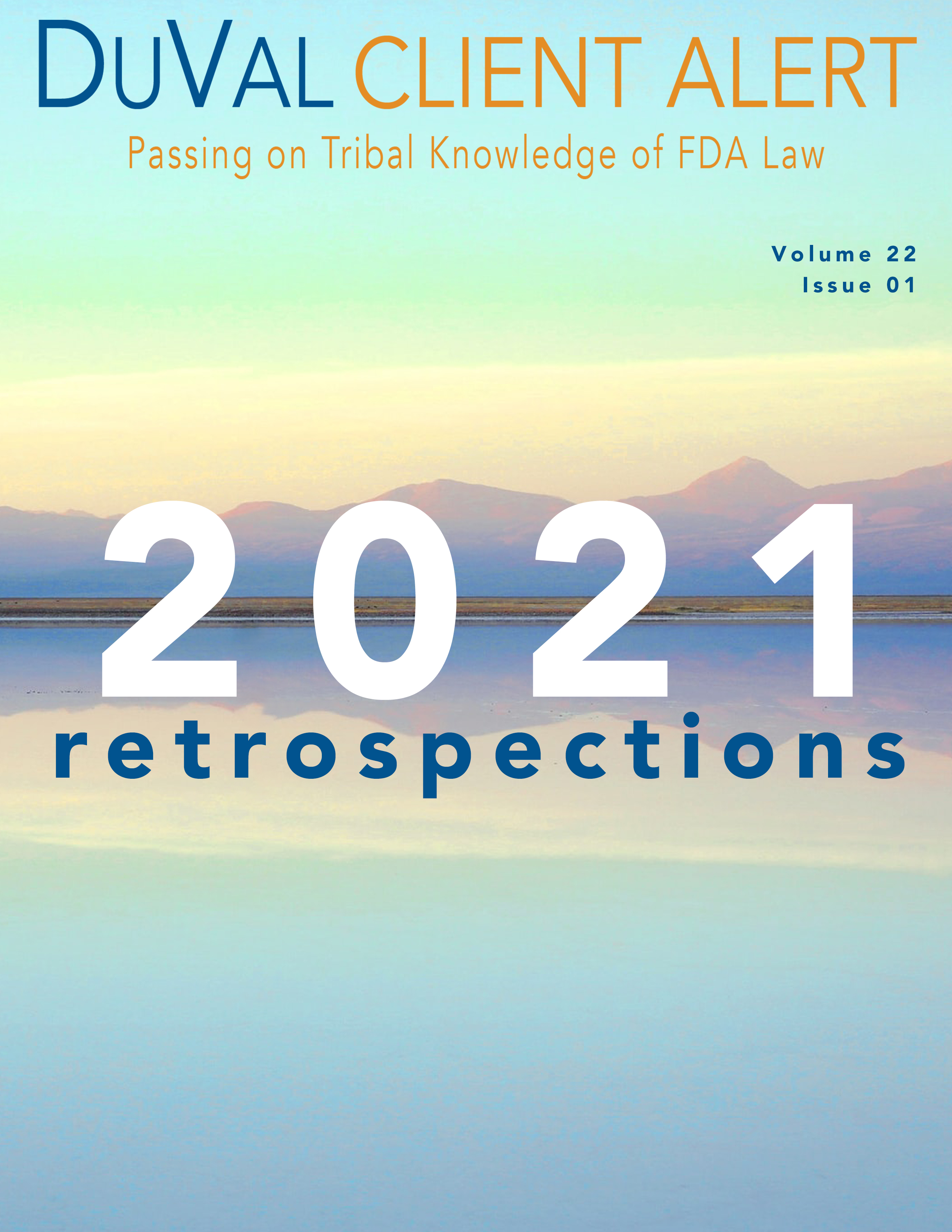
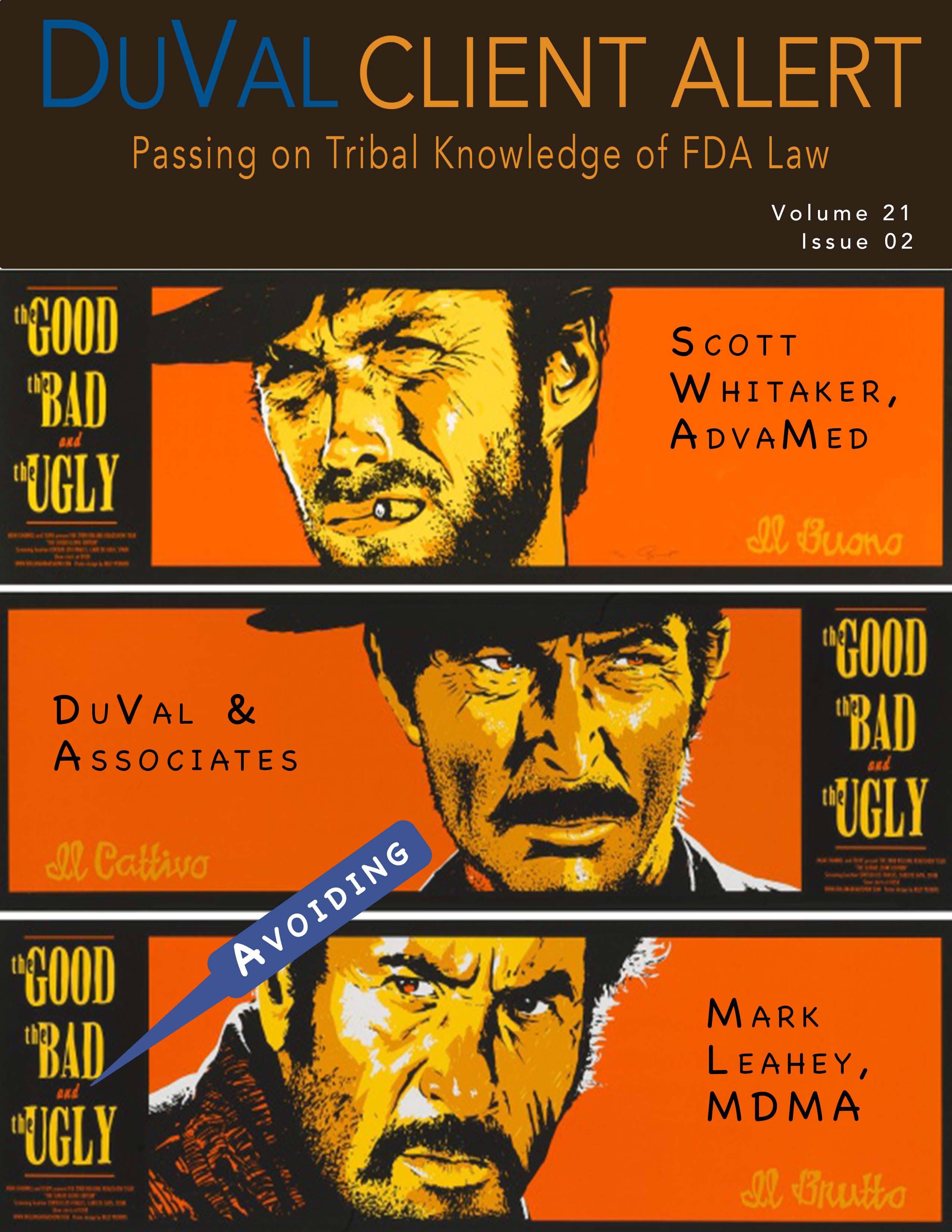
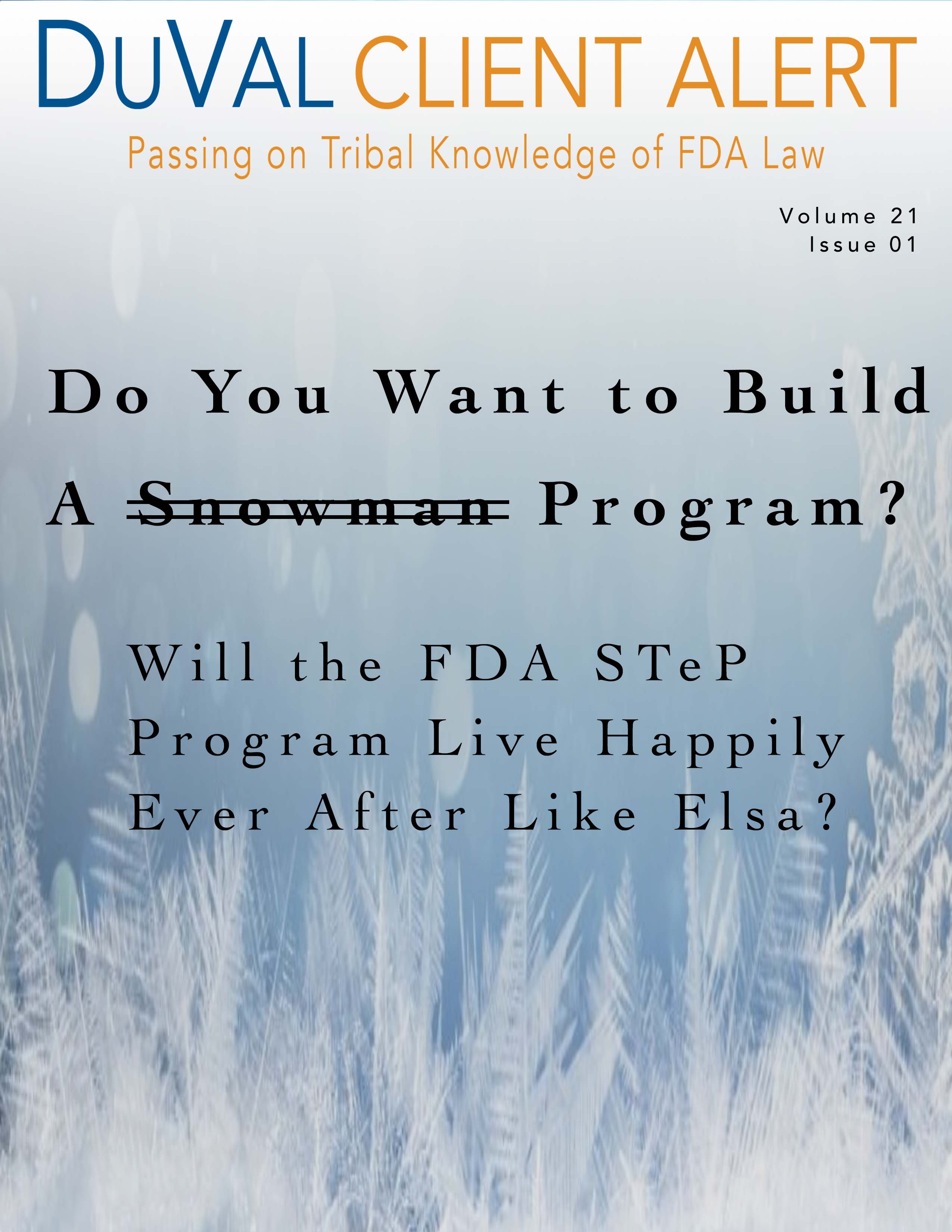
_Modifications_Transform_A_Device.jpg)
